5 May 2023
A new chapter, but still in Avilés/Asturias
Back again!
Now, taken a little longer than planned, but sometimes your own health doesn’t play along. When you hand over your personal responsibility to the medical industry, a matter of a few days quickly turns into a few months. After all, there is always something left to clarify. In the end, nothing came out of it that I wasn’t already aware of. I have to see for myself how I can deal with it. That’s not a problem either, just switch on your head a bit. Now I’m living on my boat again, with fresh Atlantic air, good food in Spain and a very relaxed life with Spanish people, no rush and all that. Is anything better in life?
In addition, I was able to enjoy my departure. As soon as I took off from Hamburg, I felt all the stress leave me behind. On my Iberia flight to Madrid, a good mood quickly set in. At times, there was also a lot to see.
The Elbe, my home territory
Dry Spain south of the Pyrenees
Iberia’s big terminal, luckily I didn’t have to walk from one end to the other. The connecting time was short. The luggage didn’t come with, and it took a day longer.
Flight to Asturias/Oviedo near the Picos de Europa
North coast, soon I’ll be sailing there along. Entering San Esteban
Back on board I had to do a lot of cleaning first, unfortunately mould has spread here and there below deck. I had feared that too. In addition, I had to wipe the upholstery hot and then dry it under the Spanish sun. Fortunately, there were two days with full sun. Now I have to do some repairs, before I can leave forward to the west in the middle of next week.
Tuesday, 16 May
The weather is not cooperating. We’ve now had 10 days of westerly winds, so nothing for amica to sail. Now there are supposed to be a few days of easterly winds. Will that be right? There are two trips to Ribadeo, should be manageable.
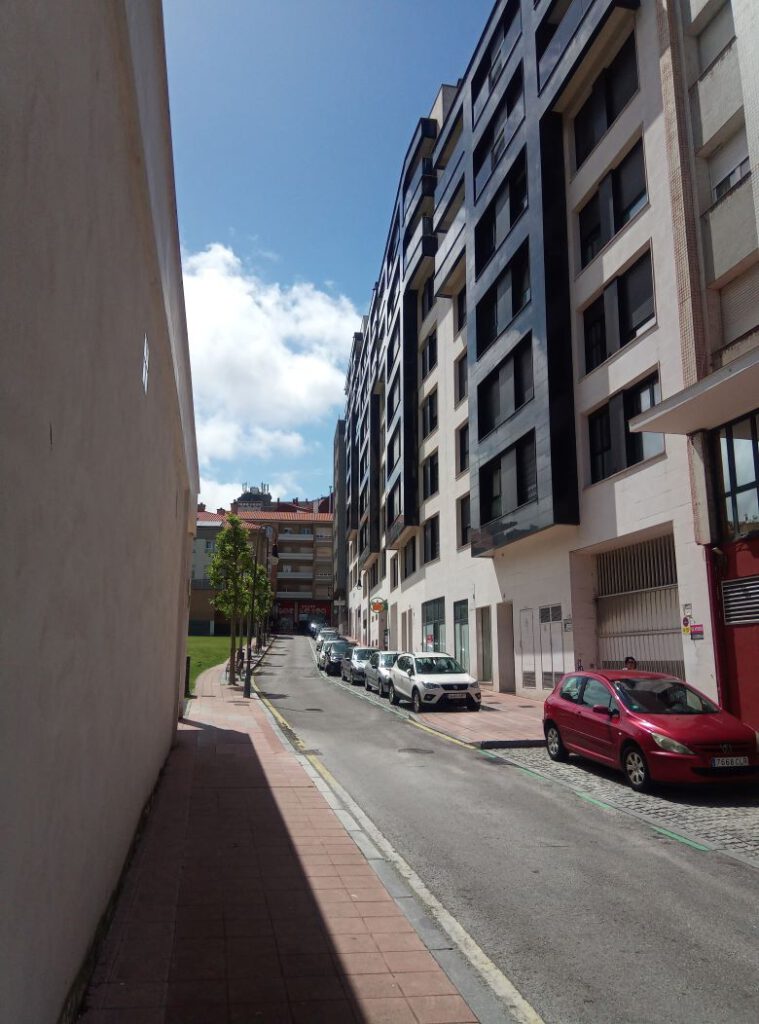
Profane Aviles on the way to the Mercadona
A little more beautiful Avilés:
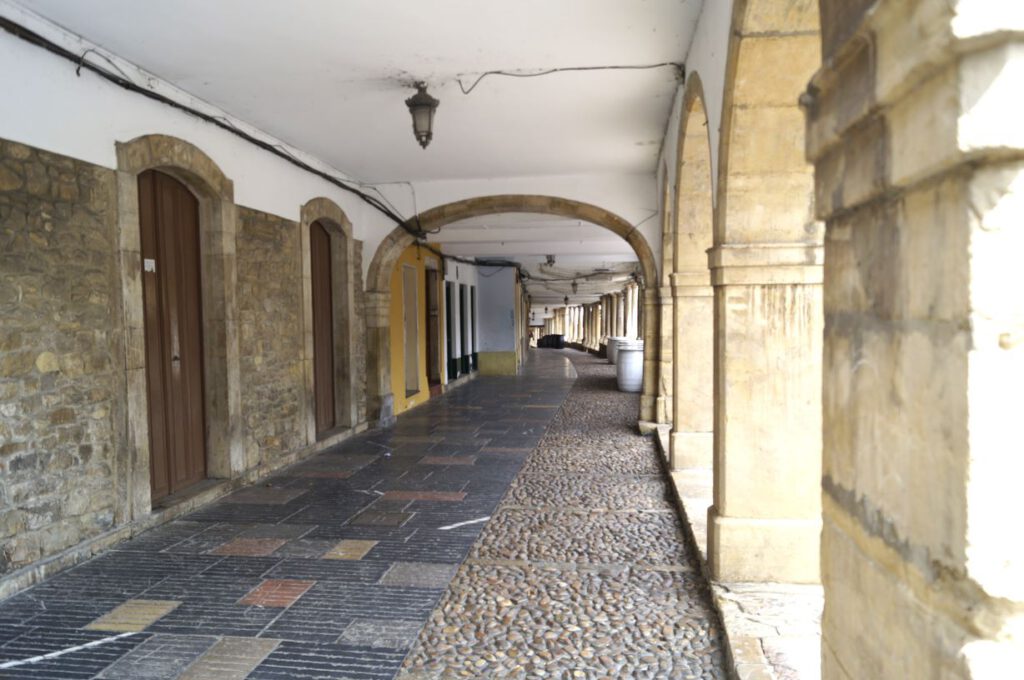
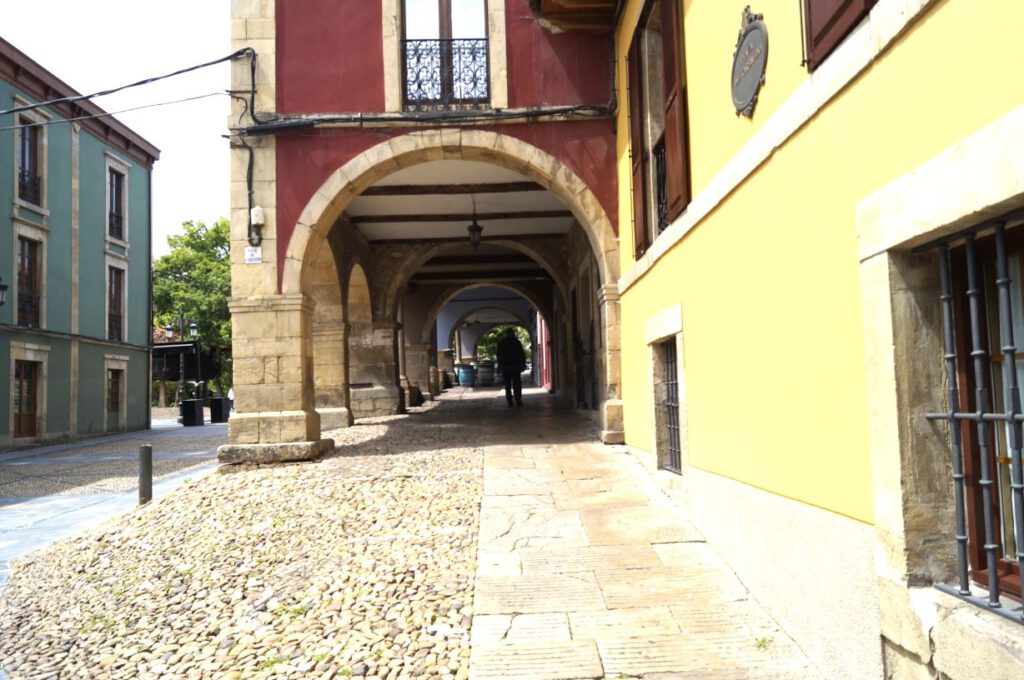
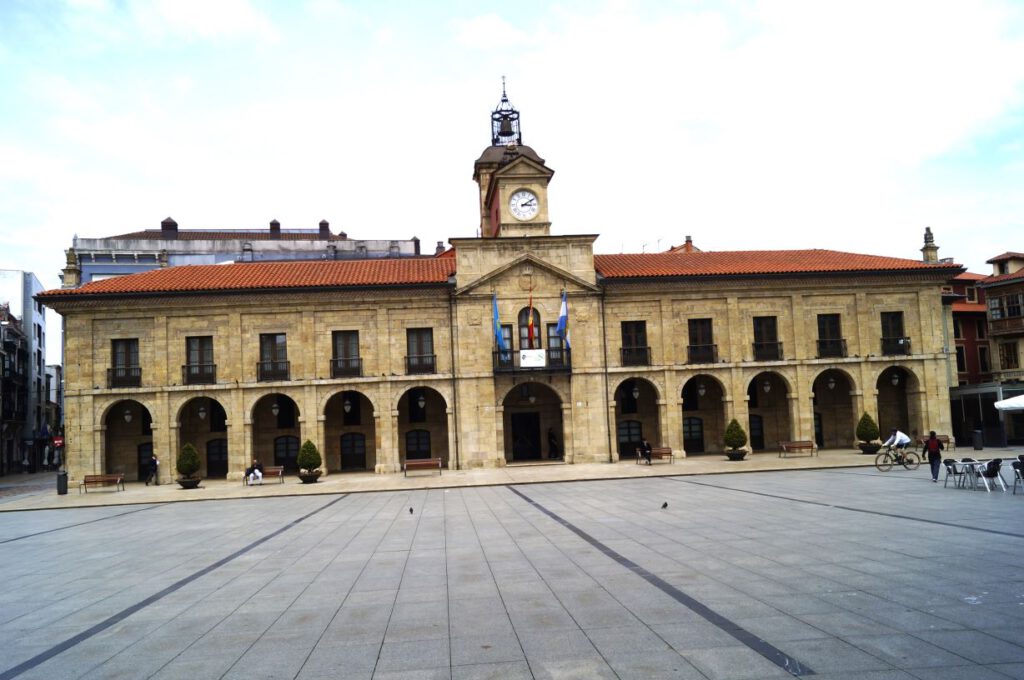
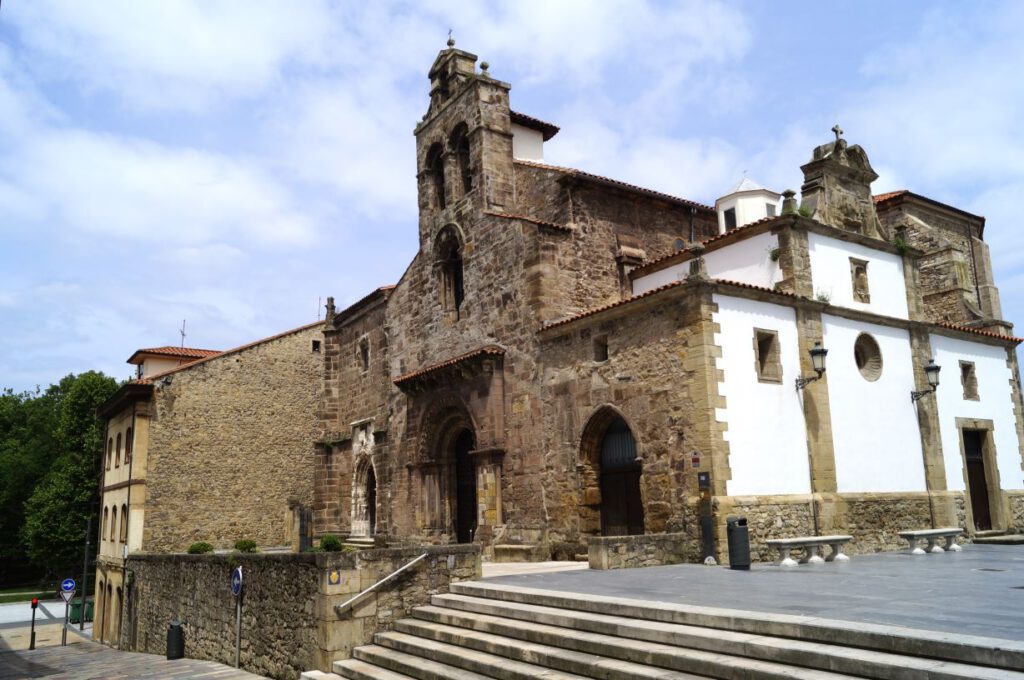
Moreover, I’ve been diligent. Once you start, there is no end of working to a wooden boat. After cleaning, I discovered that amica has suffered. The sun has taken its toll on the varnish and traces of use were everywhere.
Changing the gear oil, on the other hand, was very easy, but unfortunately, I forgot to take a few pictures. It was exciting to hoist the engine onto the deck with the halyard and tackle. I don’t lift 40 kg any more, this way it’s easier. Draining and refilling the oil was a child’s play.
The paintwork was more extensive, especially sanding and masking. The Spaniards use my boat for sightseeing, here “pintar” (varnishing) is not so common. Freshly varnished wood looks great (buen y lindo – good and beautiful).
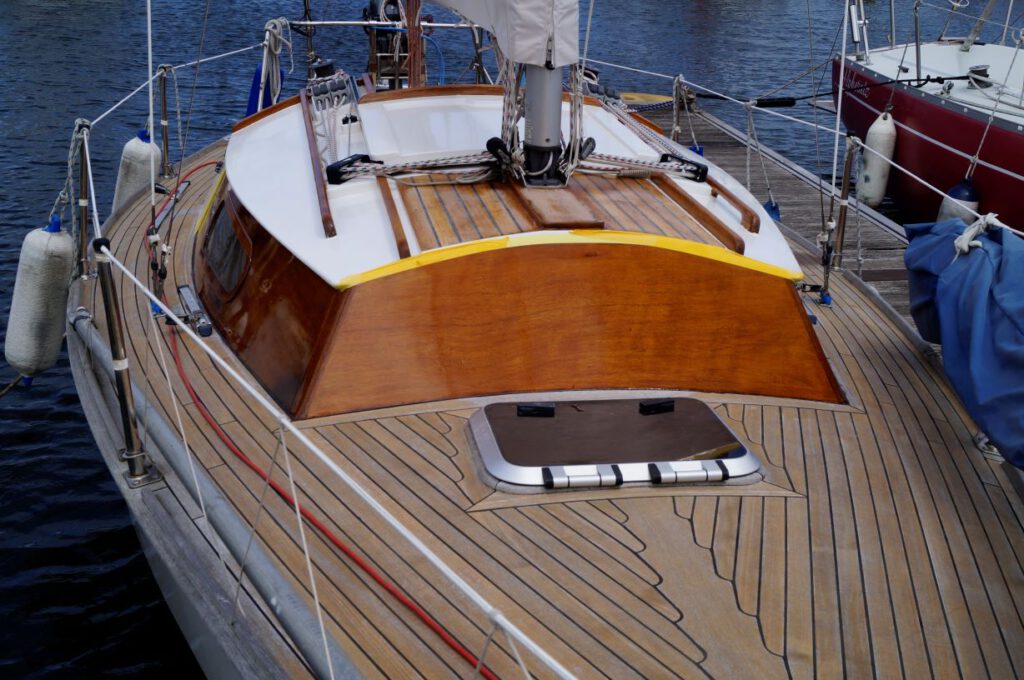
First paintjob
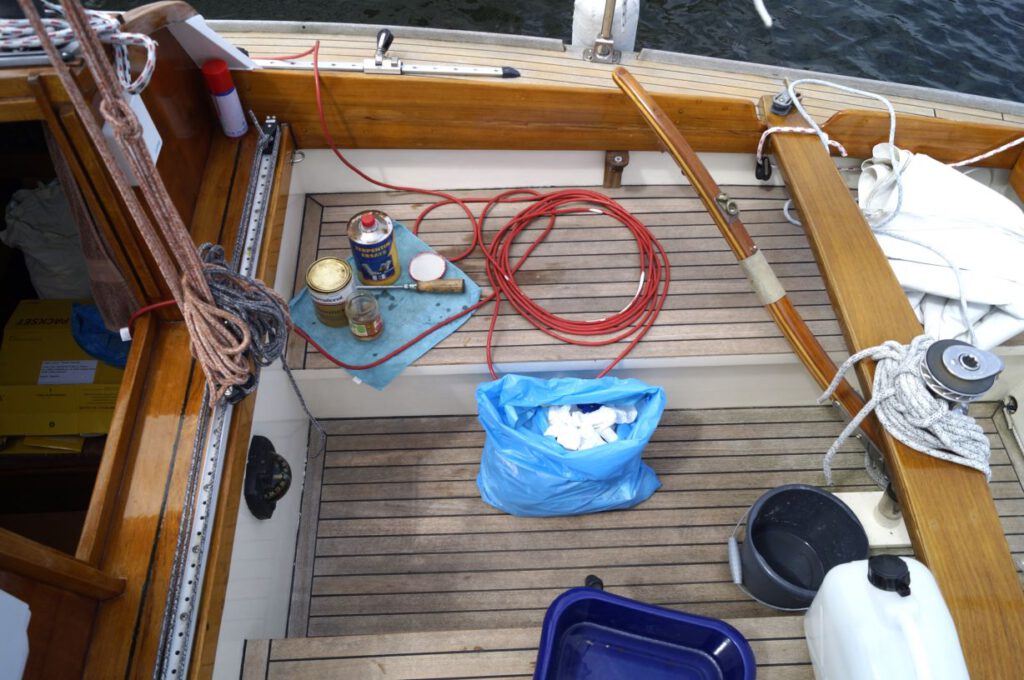
Looks like work
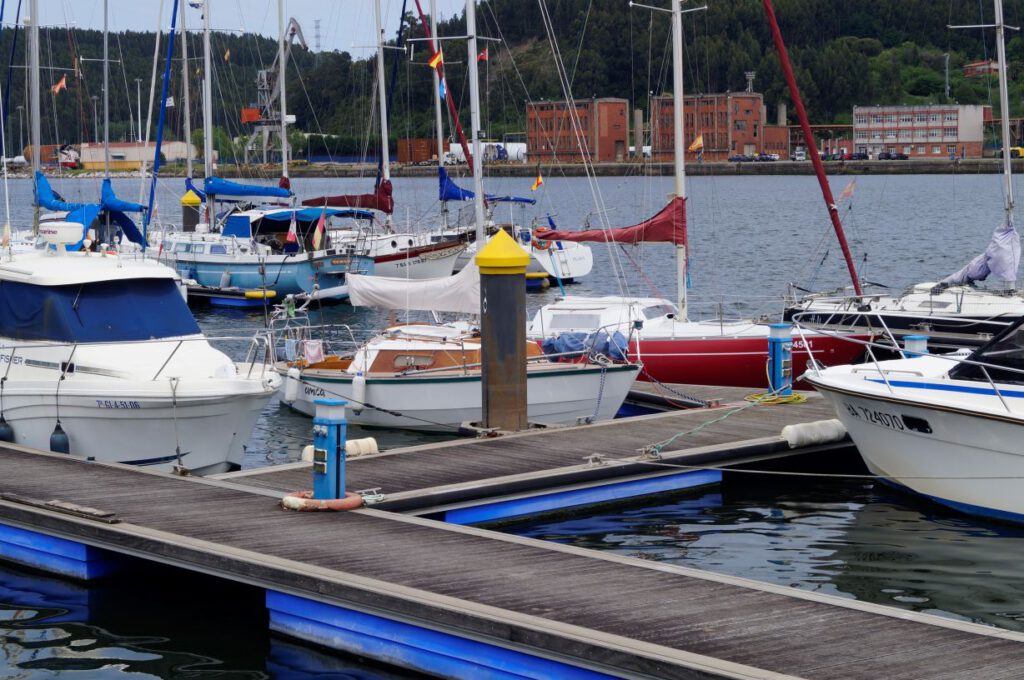
The shiny boat in the harbour
Also, the electrics work perfectly again, and I was able to persuade the cooker to run on two flames. Now it’s just the turn of the wind pilot, because unfortunately, I didn’t clean it enough. Now the system has to be made workable again, WD40 works wonders. I have to remember: even a wind pilot needs care.
Ribadeo
Sunday, 21 May
After two exhausting sailing trips, I am now in Galicia. There was one overnight stay in Lluarca without going ashore; the harbour is not designed for sailing tourists (transitos) except for three buoys. That was no more than in the evening and out again in the morning.
I notice that my musculature is not yet playing along properly, because now my arm and back muscles are aching. A break is necessary. Nevertheless, they were also very rocky trips, with almost second-by-second changes from one side to the other. And that went on for a good 6 hours. On both days, there was almost no wind in the morning, only a light swell from the north. From midday onwards, it freshened up with gusts of up to 6 Bft, which was enough to sail only under jib. With wind from astern, that’s better anyway. Unfortunately, the swell covered by wind seas and there were very high peaks of up to 2 m. But fortunately that wasn’t always the case, rather there was this fast overtaking. That’s when the corresponding muscles are used.
Adios after 5 months of winter break in Avilés
The still very high coastline between Avilés and Lluarca, to the west it looks flatter. The mountains become smaller and are no longer so close to the water.
You can enjoy Lluarca also from a boat.
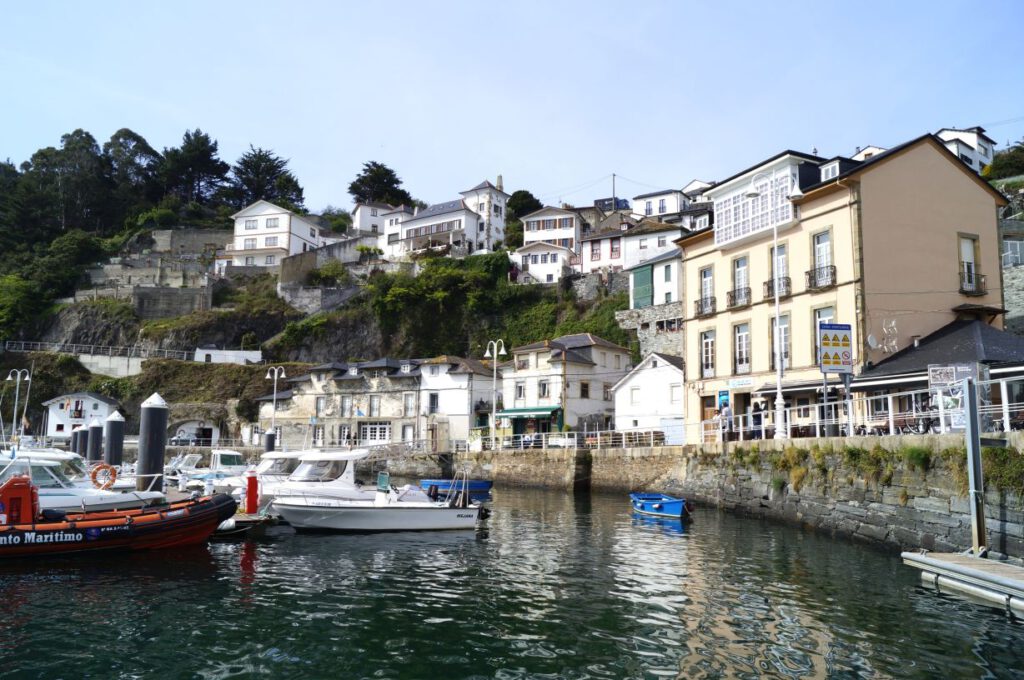
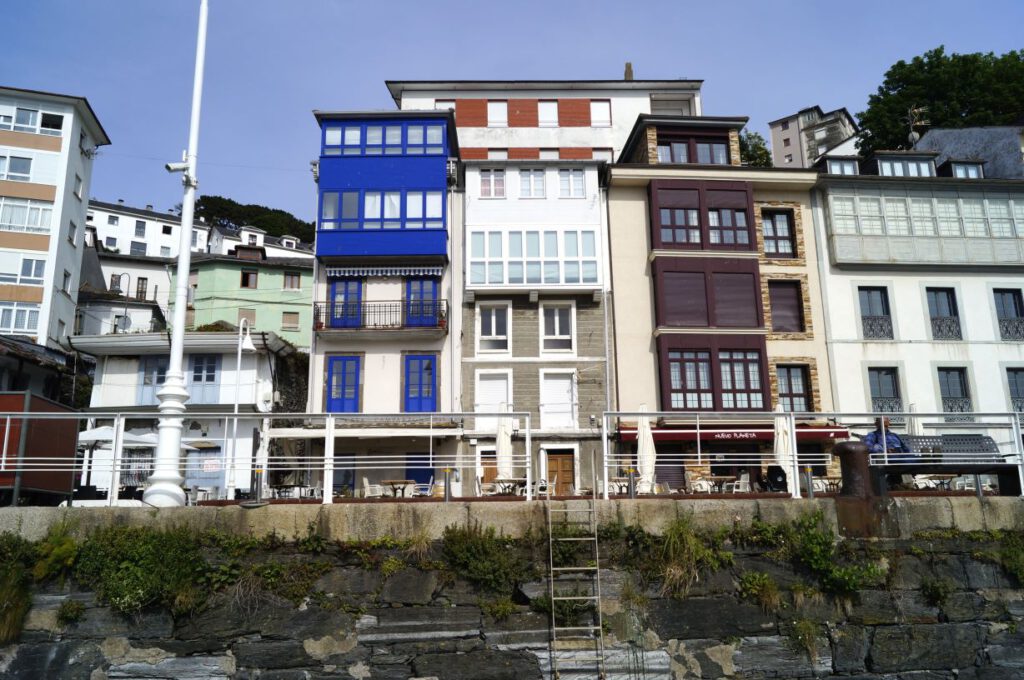
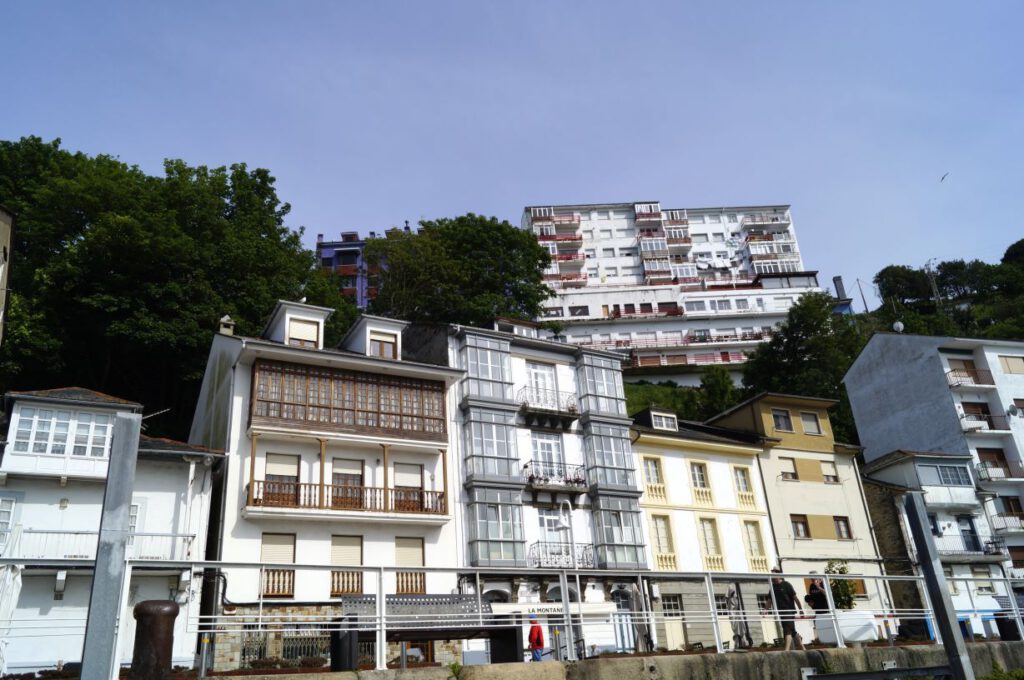
In Ribadeo, I have the impression that every path goes uphill or downhill. It may only be 50 m, but it is always quite steep from the harbour to the Centro.
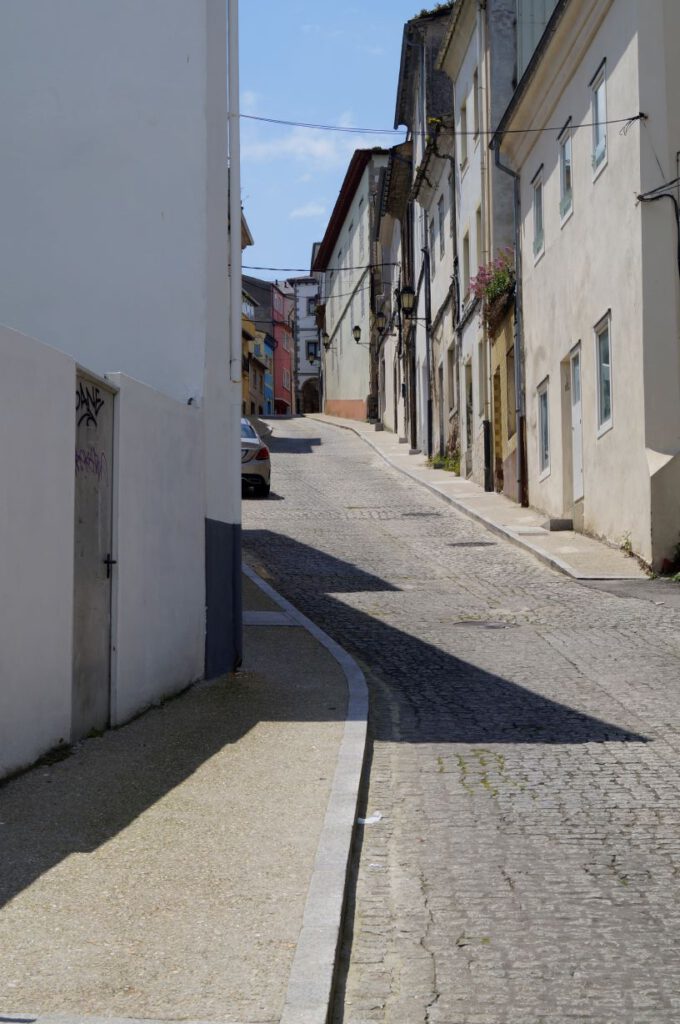
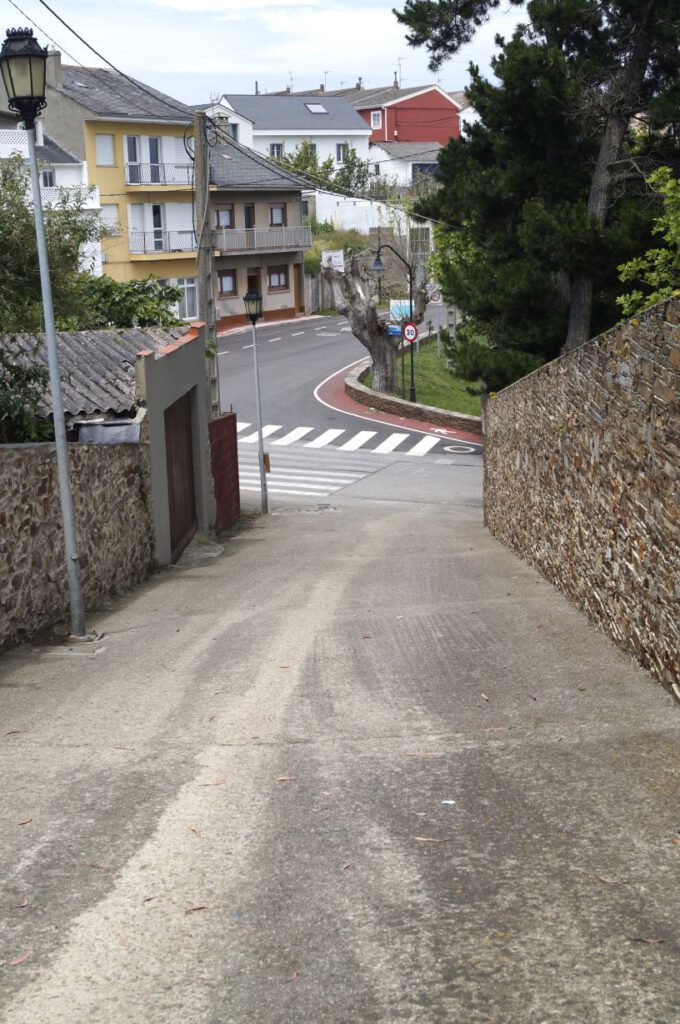
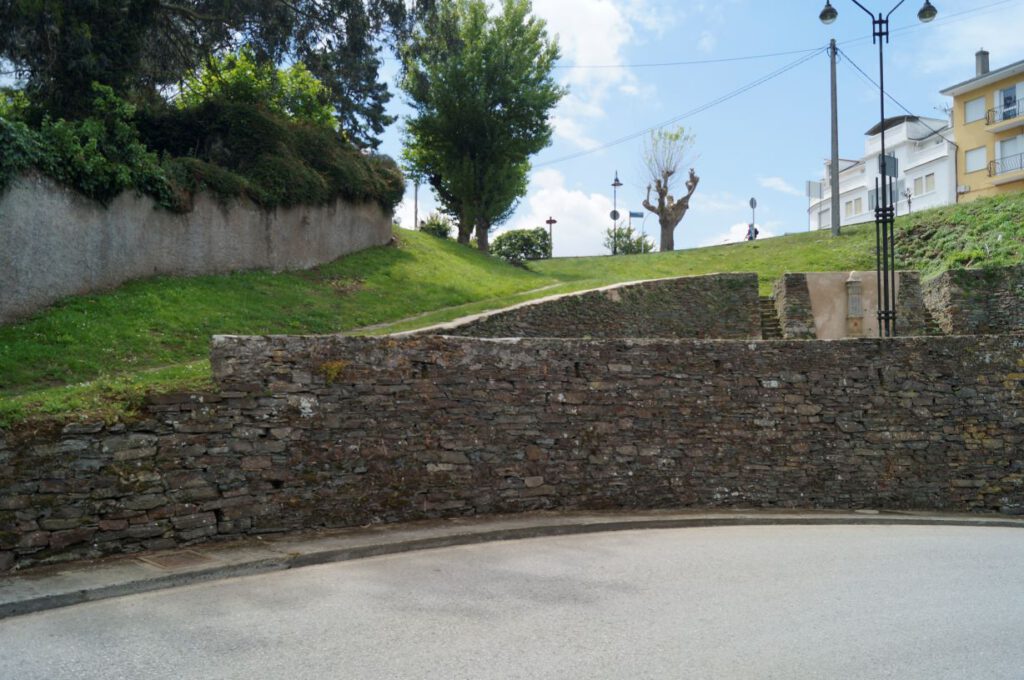
The weather still doesn’t convince me, an easterly wind is fine, but not this strong freshening in the afternoon. At the top of the two capes, Cabo Ortegal and Cabo Bares, will be a cross sea of 2 metres. According to the forecast, this should calm down by next weekend and then apparently for a longer period, with weak easterly winds.
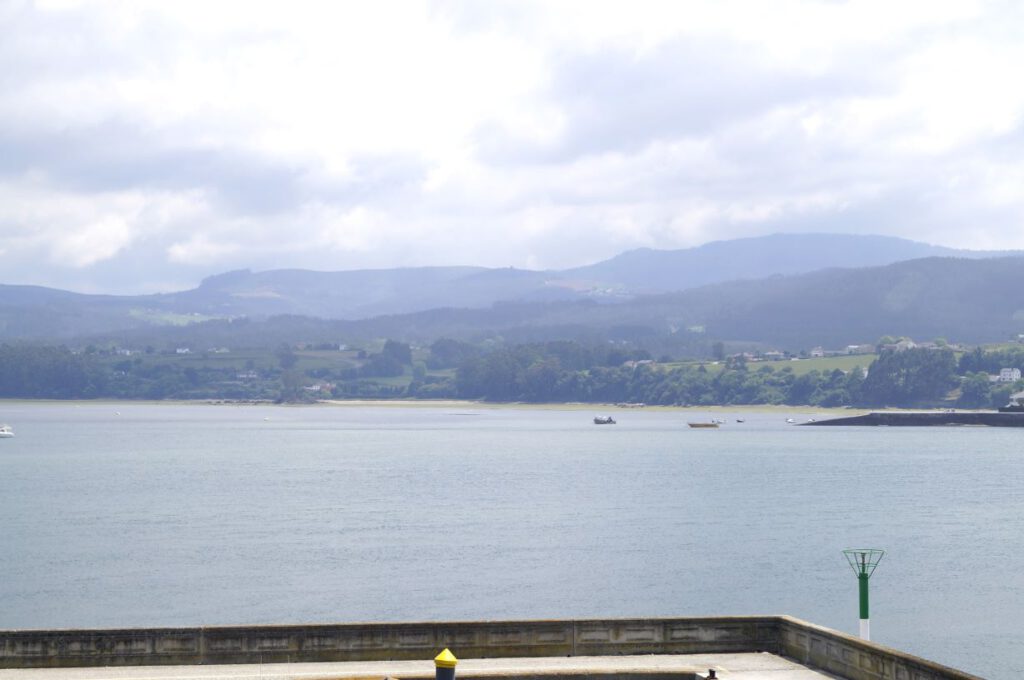
A few mountains on the Asturian side.
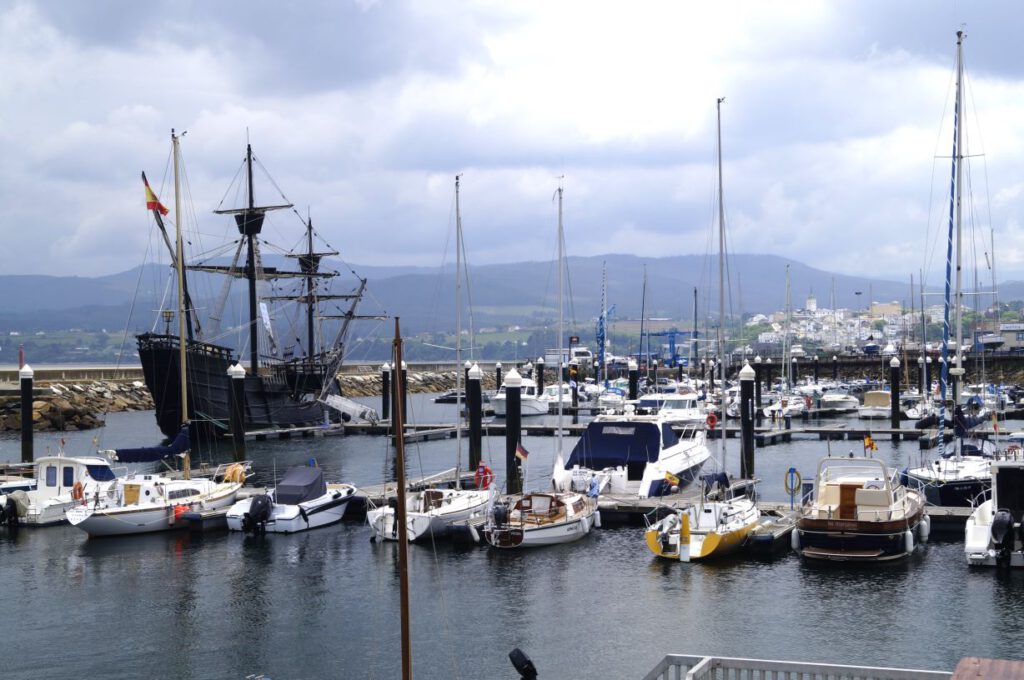
The marina with amica in the middle.
A Coruña
Tuesday, 30 May
Everything is different here; a harbour full of guest berths and the climate is milder. It is the most important thing, I’ve left the north coast with that annoying swell behind me, the swell is steady and no longer so high. Besides, my feeling at this corner is just great, it already feels quite southern to me and I achieved that with my little amica!
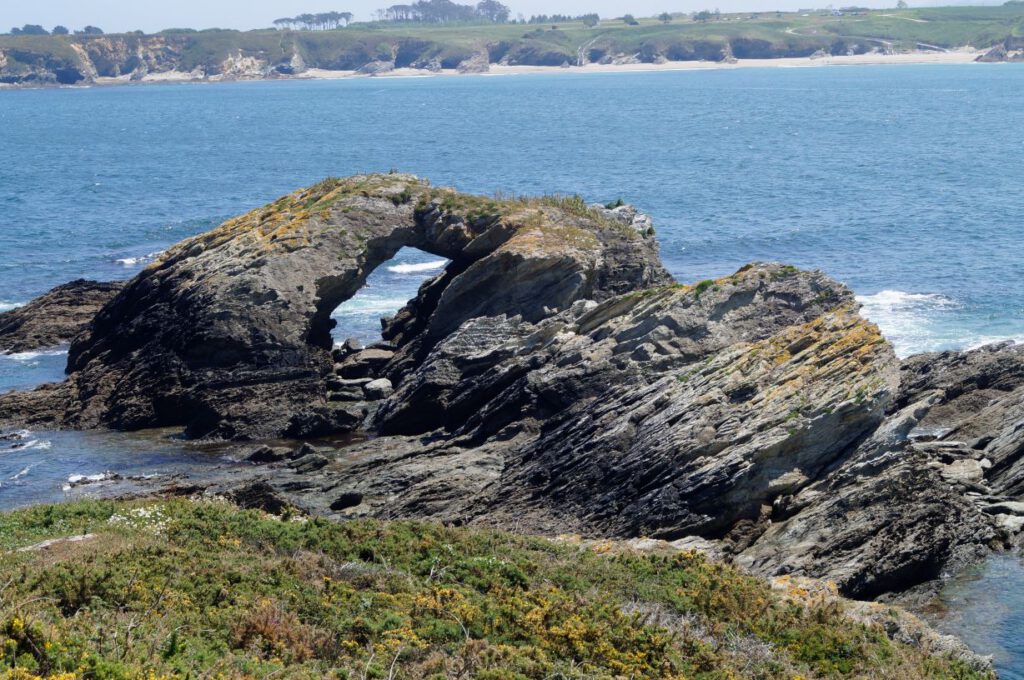
Another picture from the Ria Ribadeo
Although I waited a long time for best conditions, it still was very choppy at the Caps. Even the not so exposed peaks on the way to Vivero showed what they can do with the swell.
Ria Vivero entrance, always nice to see how the humid air forms clouds on the steep coast.
Even there are beaches in Ria Vivero, but the wind is still quite cool.
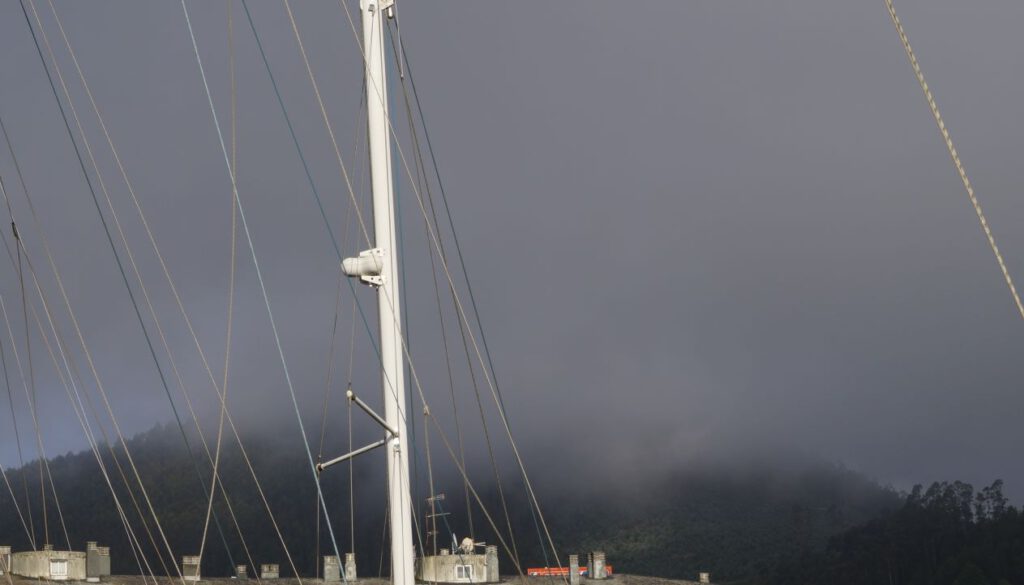
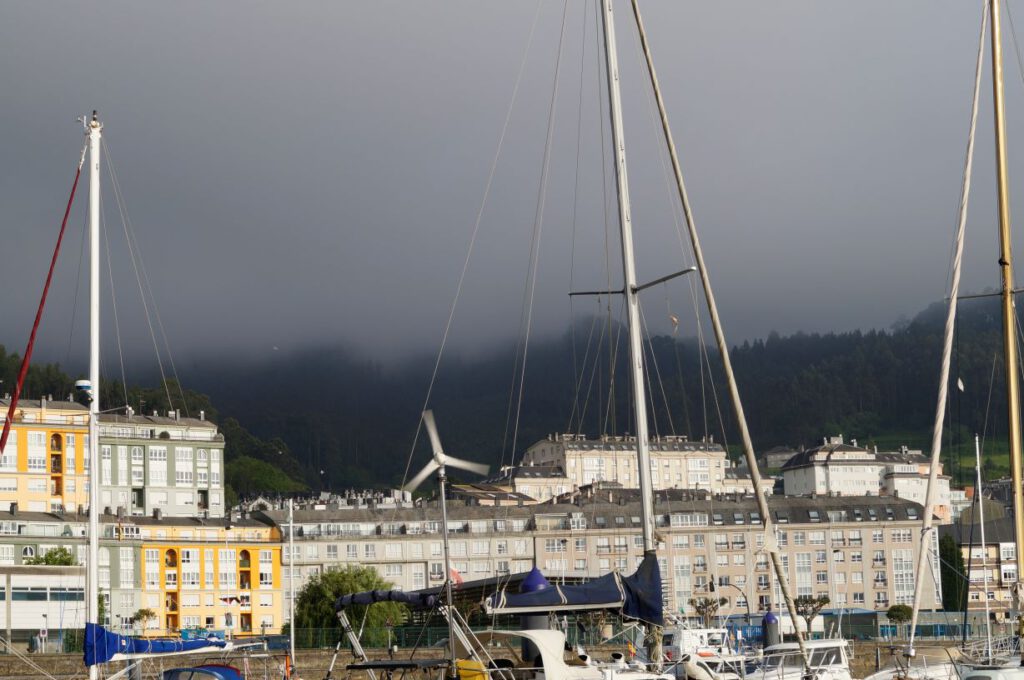
Once again a few clouds on the ridges.
The way to the anchorage of Cedeira led around the two caps, the northern points of Spain.
Punta da Estaca de Bares
Cape Ortegal
Almost on both trips, there was no wind in the morning, but from 2 p.m., the wind was quickly increasing and on arrival in Cedeira came it was a good six Bft from astern. On both trips, it was always possible to sail half the distance, although after Cedeira again I quickly haul in the mainsail.
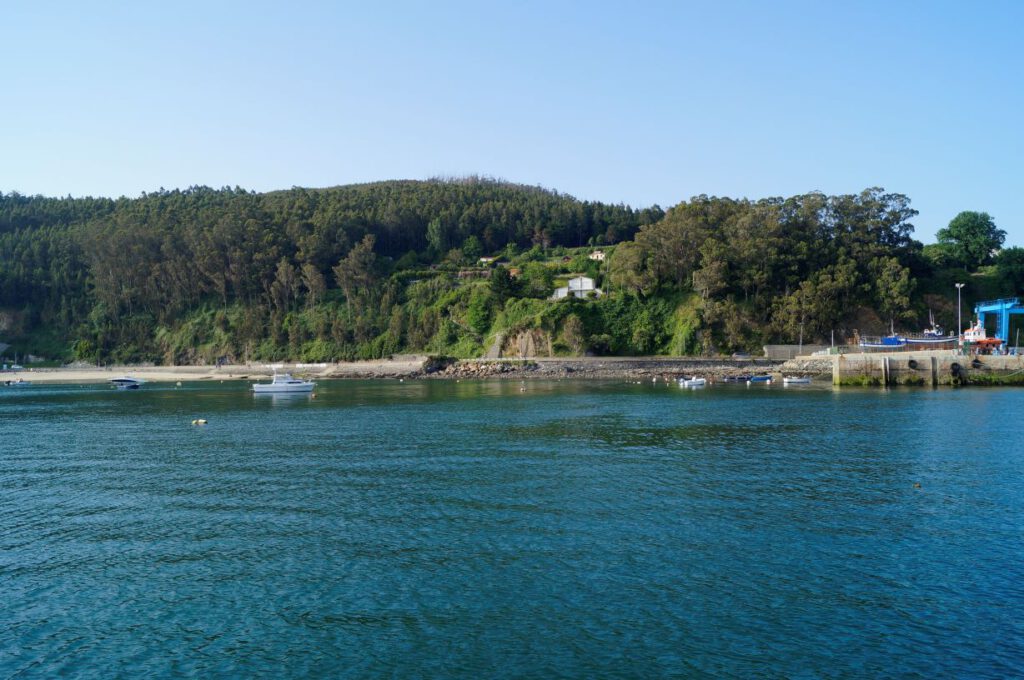
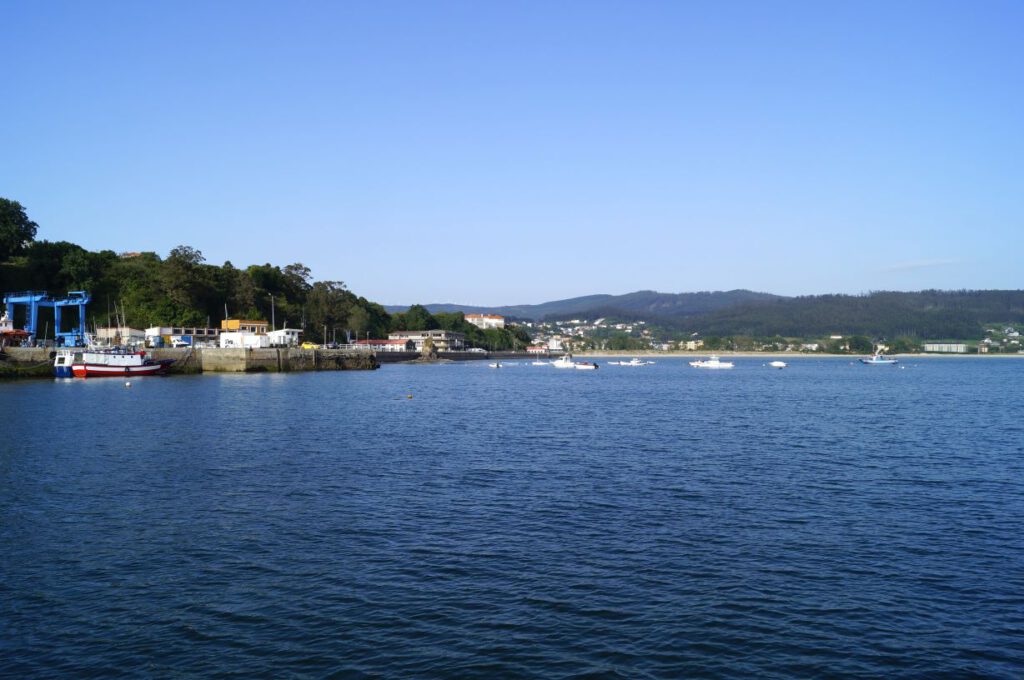
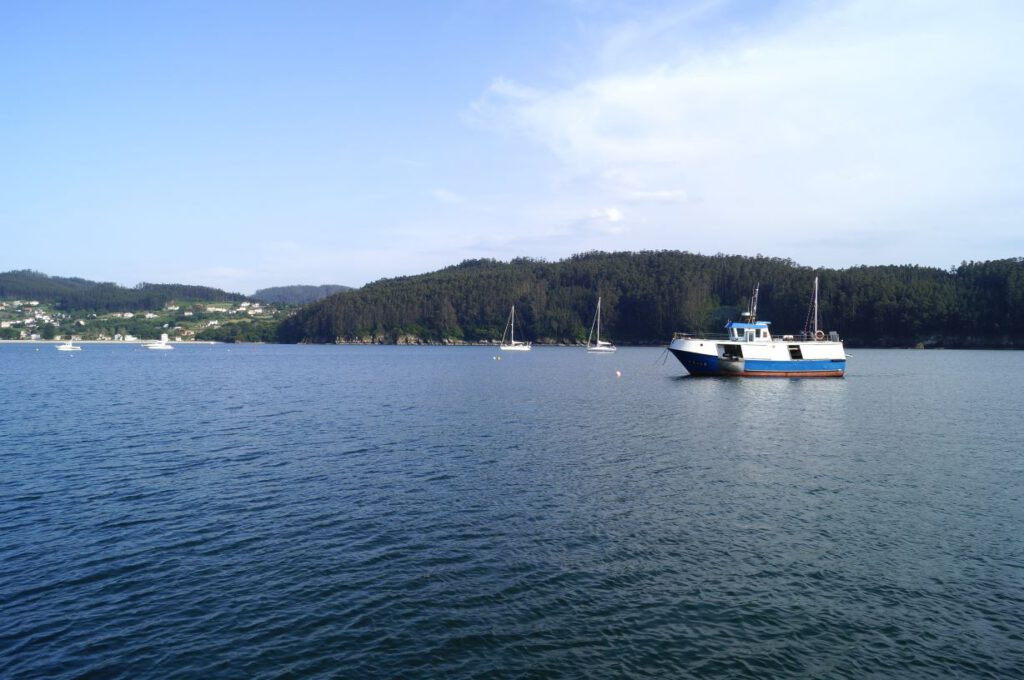
Anchorage Cedeira
Thick fog formed overnight, so my plan to leave early at 8am didn’t work out. It was supposed wind increase again to 5-6 Bft from 2pm. I had to wait until 10am for a 50 m visibility to develop into a 300 m visibility. From time to time, you could see the rocks. Navigating was only possible with a plotter and echo sounder and of course extreme attention from the fishermen scurrying around, who of course have no AIs. From noon onwards, the fog disappeared and again at 2 pm the wind comes back 5 nautical miles in front of A Coruña. Well, I sailed under engine downwind. I didn’t want to go on the foredeck to clear the jib, safety first. Now I’m going to take a little break.
Wednesday, 31th May
Tomorrow my break should end, as I still have a meeting in Vigo. Although here one could stay longer, because there is a lot to discover. However, tomorrow is a good weather window. To leave the harbour it only depends on any fog that does not might appear, the light wind from the northeast is right and the wave height fits. I took a few more pictures, unfortunately not all of them turned out well. I have changed something on the camera. Likewise, I’ll have to look into that in more detail, it would be a shame if something like that happened often.
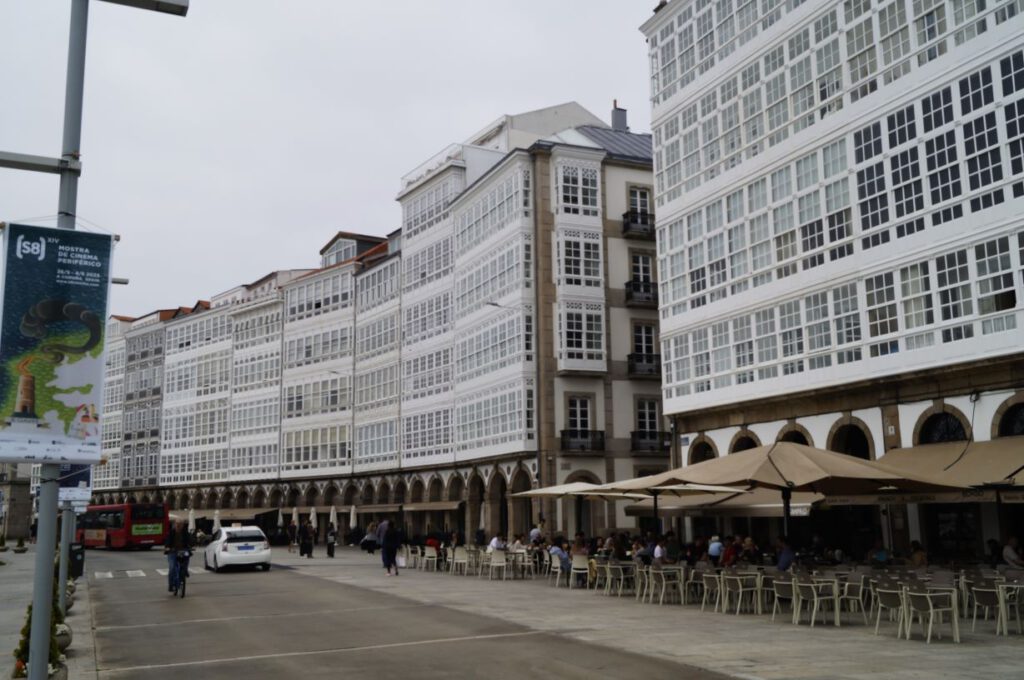
I find this row of harbours fascinating.
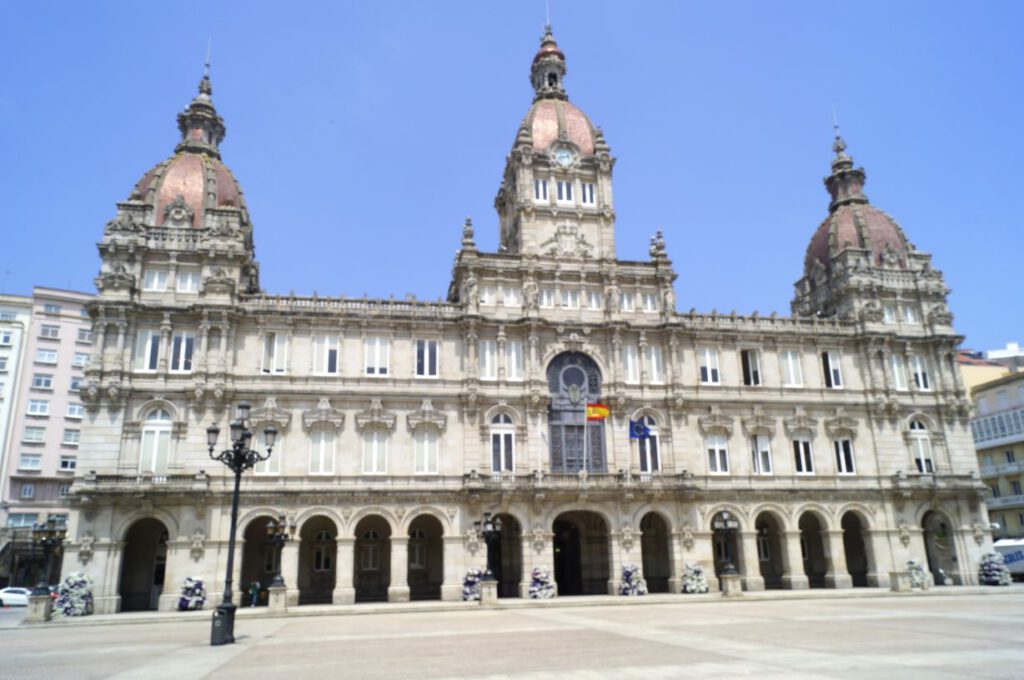
And they have a palace here too.
That’s a long one. No sooner had one left than the next cruiser came backwards into the harbour.
From the sea, A Coruña doesn’t look very nice, somehow more like a modern city without style. But as you can see from the pictures above, there are charming corners in the old town. The Atlantic is quite calm at this time. 5 hours later at Cabo Villan there were gusts up to 6 Bft and corresponding wind seas.
Moaña
Tuesday, 6th June
Extremely well-timed, I was able to welcome Barbara on board in Vigo yesterday. I had just tied up the lines when she called to say she was standing in the harbour looking for me. It doesn’t get any better than that. Today we sailed across the Ria de Vigo to Moaña, 2 nautical miles to the north. Here the temperatures are more bearable and Vigo is not at all beautiful.
The trip around the northern tip was, as expected, a bit exhausting. I did the 48 nautical miles to Muxia in one go. Of course, the weather this day looks like normal, there was hardly a breath of wind until 10am, then there was a nice breeze from the north-east until 1pm, which I was able to take advantage of with only one reef.
Once again, on the way I have a visit from my friends.
By then I was already sailing only under jib downwind in gusts of up to 20 knots. Around Cabo Villan, the motor was running, because with 8 knots of wind, I could hardly make any progress with just the jib, and I didn’t want to get the gusts up to 25 knots with the mainsail. From Cabo Villan down to Muxia I had a constant 18 – 25 knots of wind in broad reach. These hardly predictable conditions are exactly the reason the Costa da la muerte is considered as so dangerous. Even with wind forecasts of 4 – 8 knots, you have to reckon with strong gusts here at the Caps and, of course, corresponding wind seas. Fortunately, I had all this from astern.
Cabo Villan from the south
From Muxia to Vigo, the wind had stopped, and I didn’t even need to raise the sails. Up to Fisterre I could at least still see the coast, but from Fisterre via Muros, Sanxenxo to Vigo it was pure fog. The coasts were rarely visible, with a few rocks in the water now and then. Today the fog is over, we are now just waiting for the strong end of this weather situation with thunderstorms (tormentas) and heavy rain.
On the way to Cabo Toriñana, from there on the maincourse is south.
Western tip of Spain Cabo da Nava, my westernmost position: 9°18,4′ West
Shortly after this, Cabo Finisterra
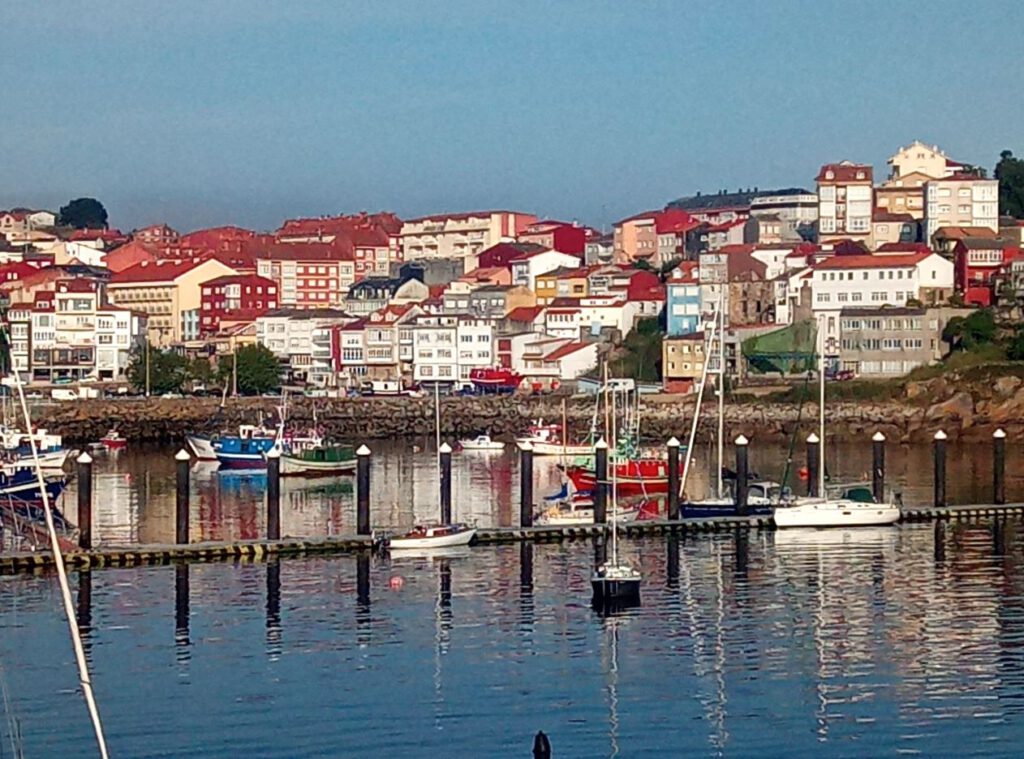
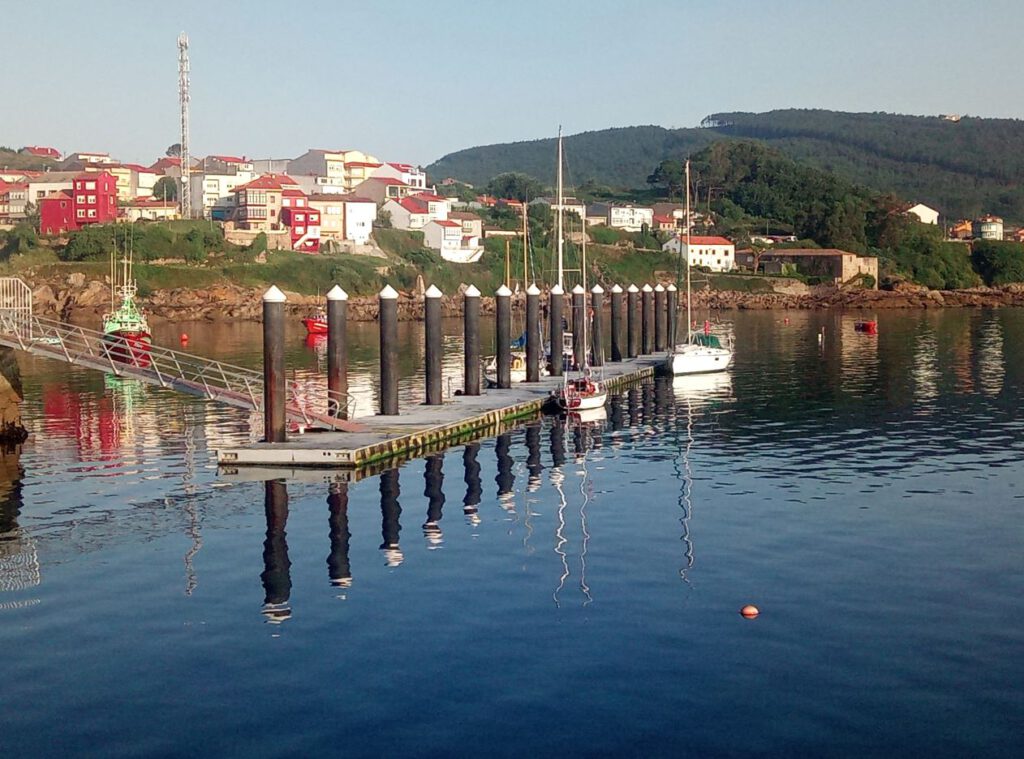
The harbour of Fisterre, although they have a pontoon by now, it is not very protected. The fishermen race past here with their speedboats and make the corresponding swell. That puts a strain on the fenders. About half an hour later, the fog arrived.
At the tip towards Muros, the Islotes de Neixon
Punta Bouga shortly before Muros
Muros in the morning, after the dense fog has cleared. The evening before, in the sunshine, everything looked much more beautiful.
I will now share with you the exciting foggy drive to Sanxenxo.
On the way to Sanxenxo, the first sighting of land at the Basonas shallows, some 600 m from the coast.
At Cabo Corrubedo
Always there are rocks, because I’m driving close to the coast. If you can’t spot them; yes, they were difficult to make out.
The Islas Sagres shortly before the Ria de Arousa
Sanxenxo
Monday, 19 June
Making holiday! Here, that means drifting around in the Rias without any destinations. No, “we have to go here or there”, we just stay where we like it. For me, it’s an opportunity to have a closer look at the country, the harbour, and the people between docking and casting off, and also just hang out. Barbara doesn’t need a challenge either, and doesn’t feel like Atlantic sailing anyway.
We are on holiday in the Rias, or more precisely in two of them: the Ria de Vigo and the Ria de Pontevedra. In Moaña we spent 5 days in a lot of rain. It was quite warm, and we decided not to go further into the Ria de Vigo in this weather. We find fresh Atlantic air much better.
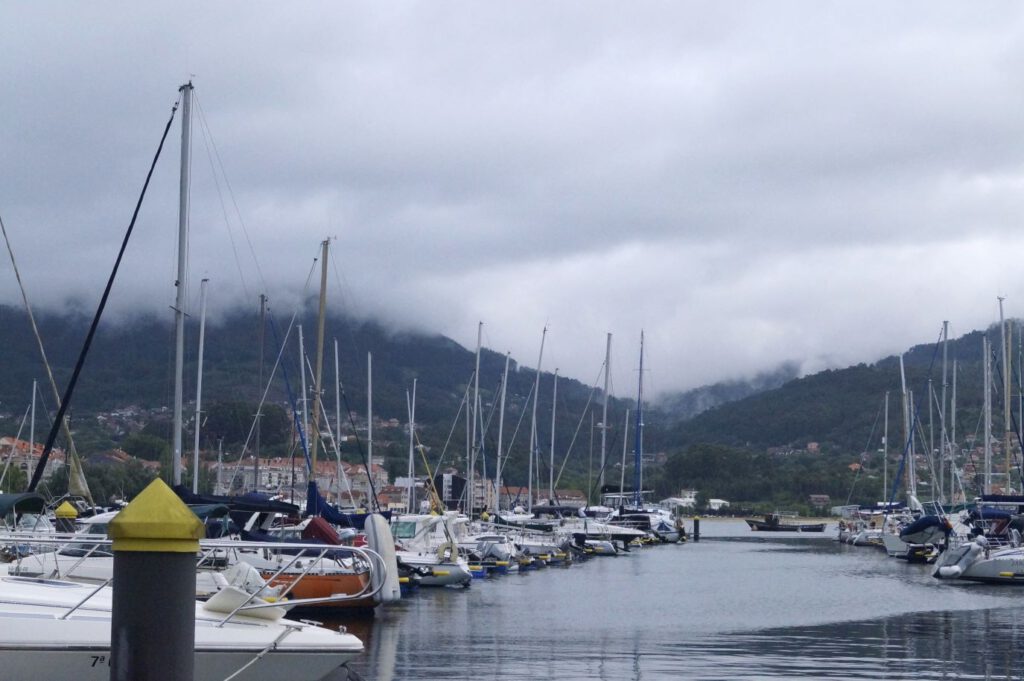
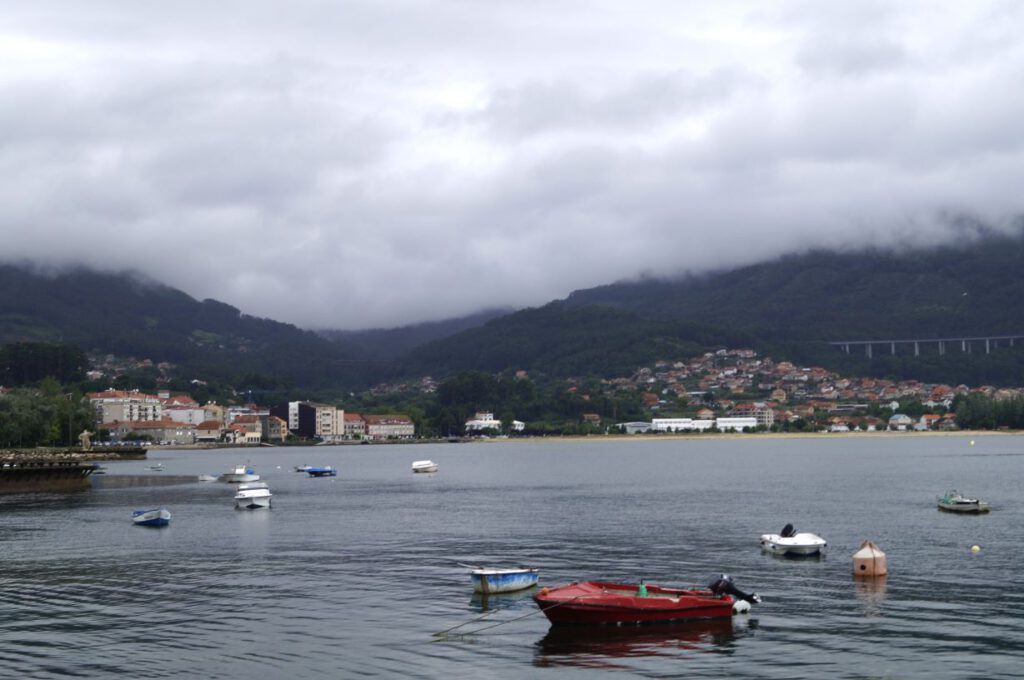
After 3 days, the clouds moved a bit higher, there was only rain above 300 m.
Moaña is a very small town with a beautiful mercado hall with fresh fish, vegetables and fruit. We were able to enjoy nature on a short hike.
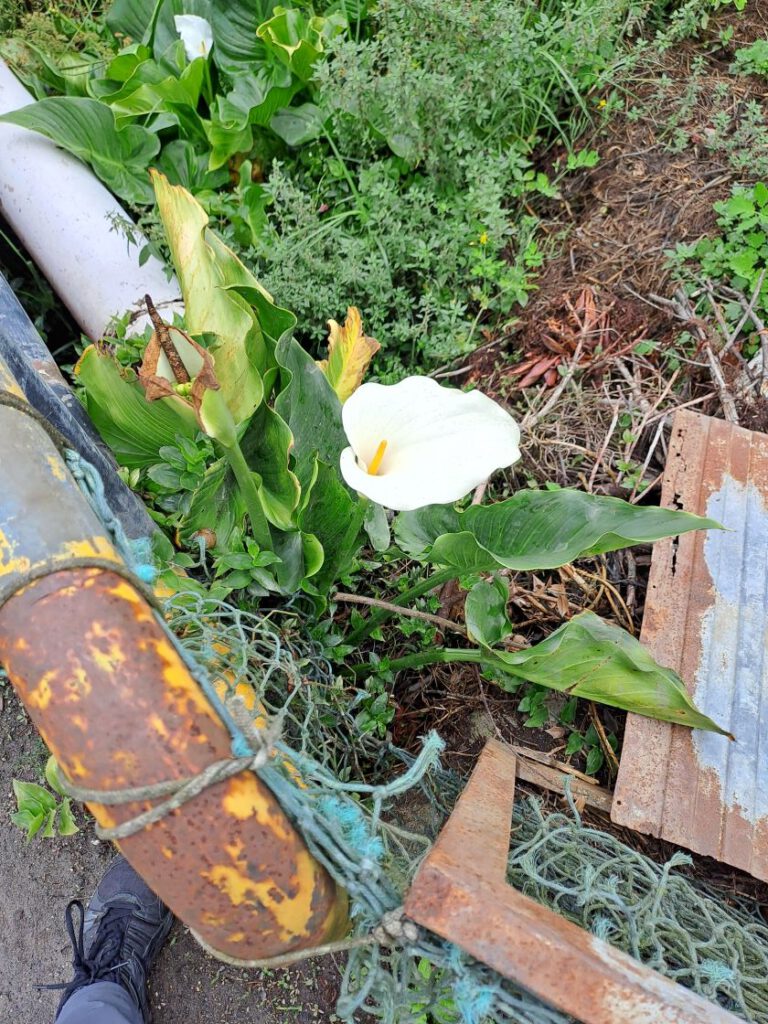
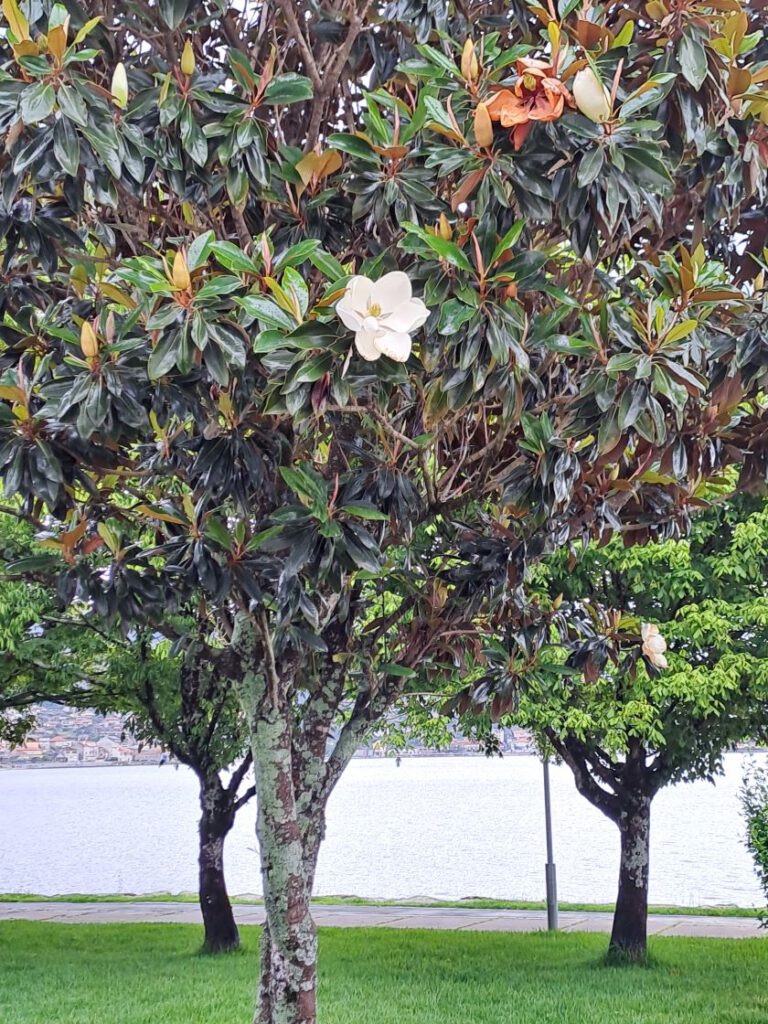
A small hike after the rain, up the Sendeiro Rio de Fraga. There it was still very wet.
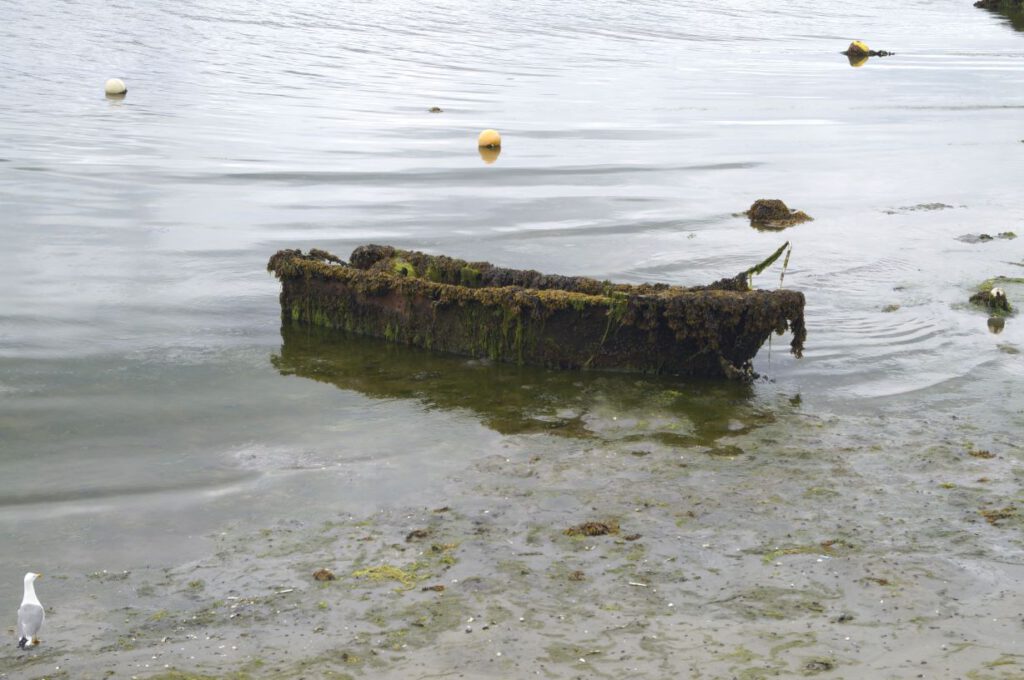
Not visible at high water.
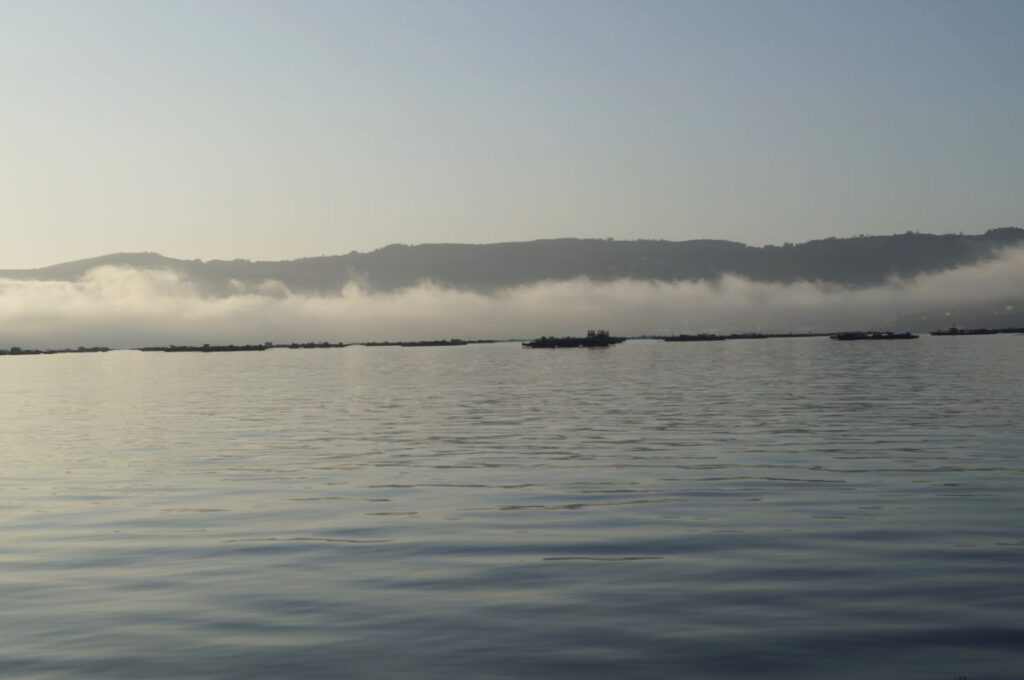
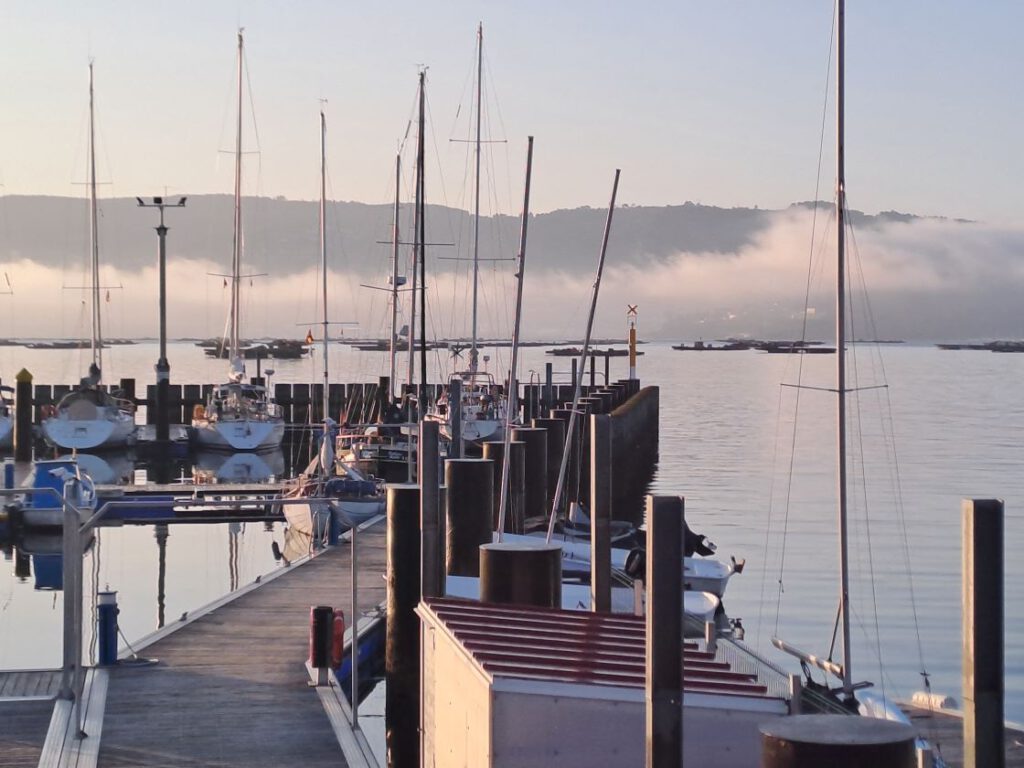
Morning mist from the Ensenada de San Simon, the last end of the Ria de Vigo.
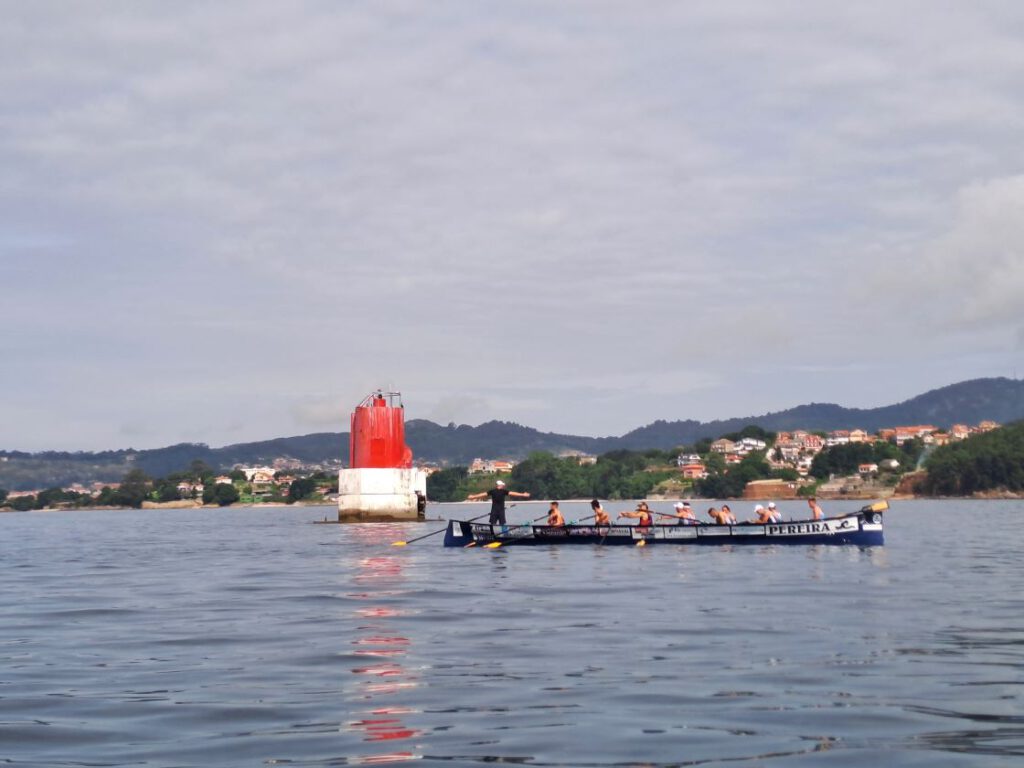
Interesting rowing boats with enormous speed potential. We’ve seen them pass the port of Moaña a few times, certainly travelling at more than 10 knots.
On the way from Moaña to Cangas, Barbara sighted a very large fish close to the bow, which caused a brief moment of shock. Only this was not a fish, but the first encounter with a dolphin of almost 2 m in length. This led to excitement on the part of both Barbara and the dolphin. The dolphin then made one jump after the other.
In Cangas we met our nice Dutch sailors, whom we already knew from Ribadessella and Gijon. A pleasant cockpit round ensued.
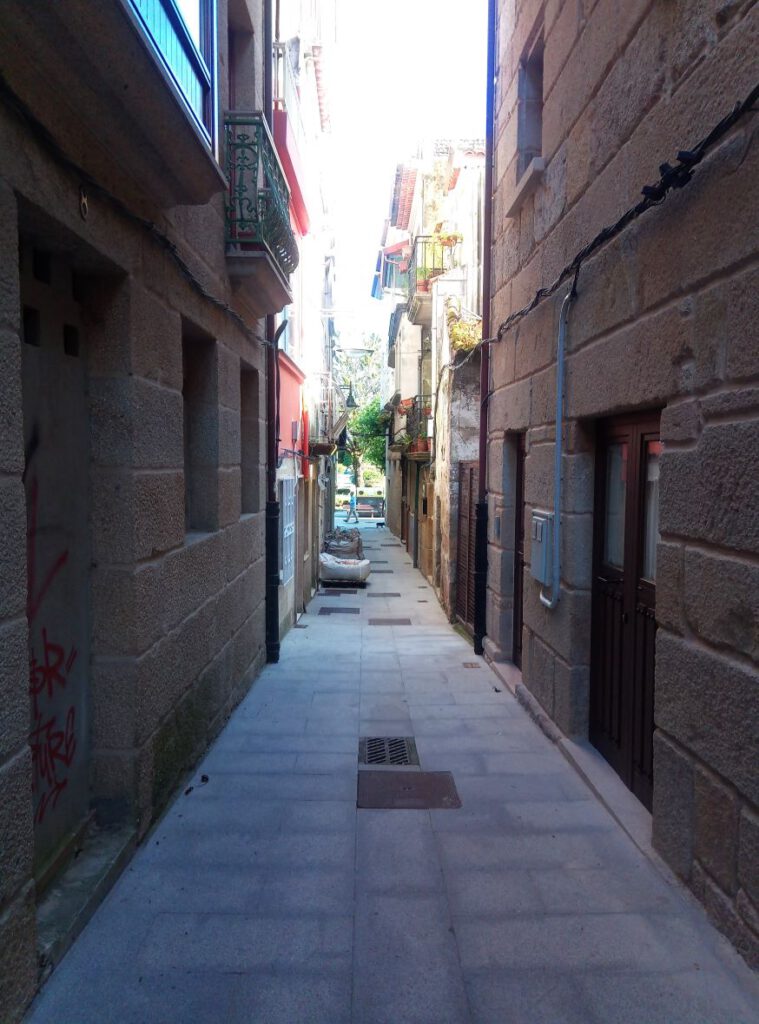
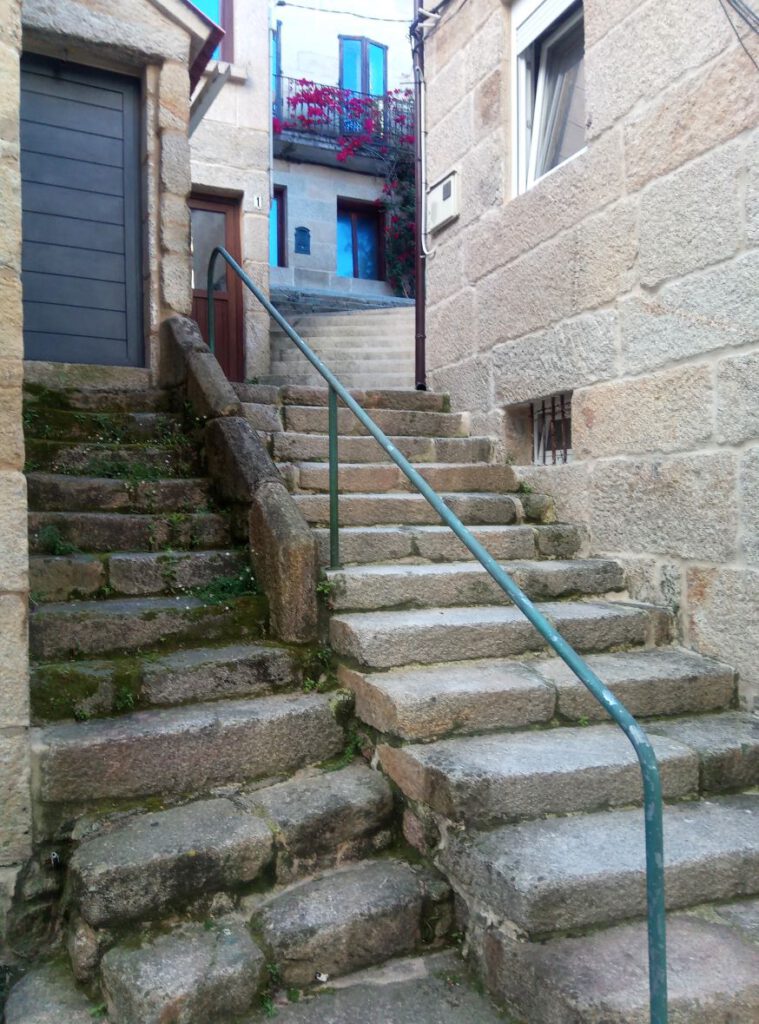
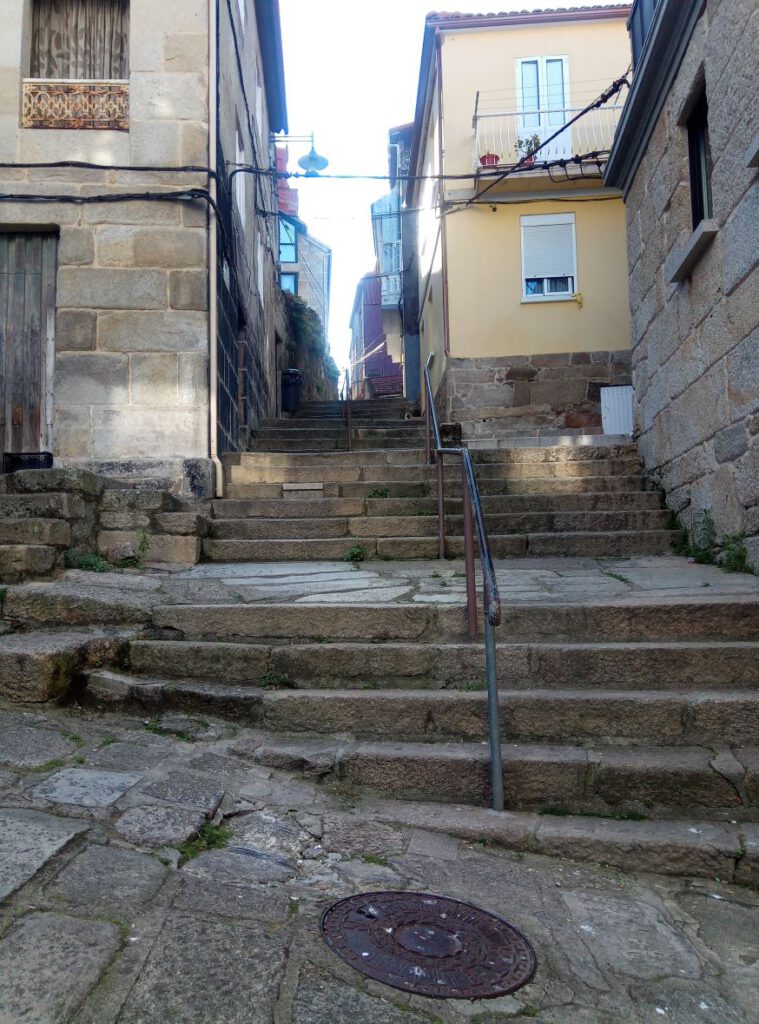
Cangas has a beautiful old town with many winding streets.
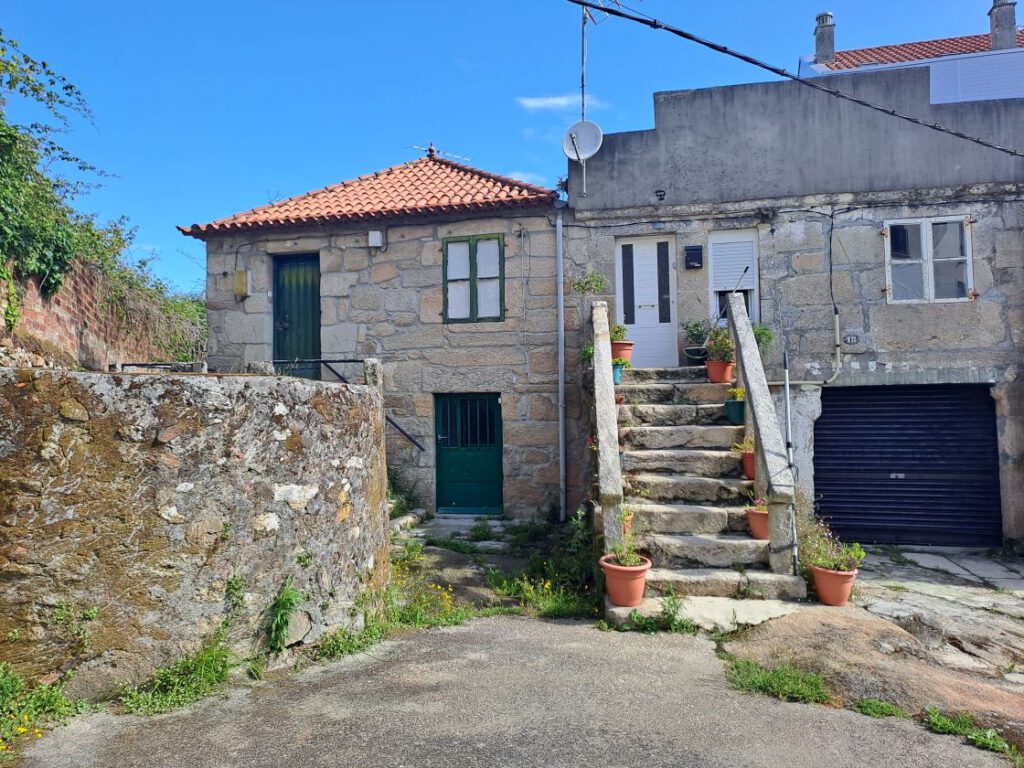
Mi Casa, a number of very old buildings, are for sale.
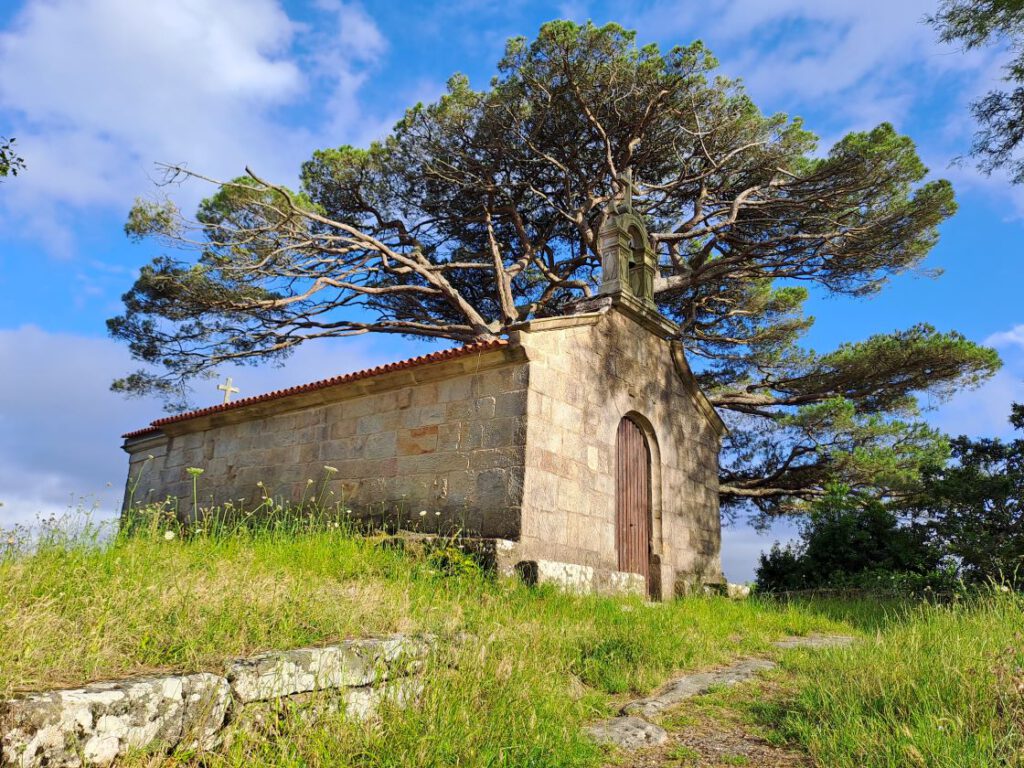
We climbed the viewpoint,
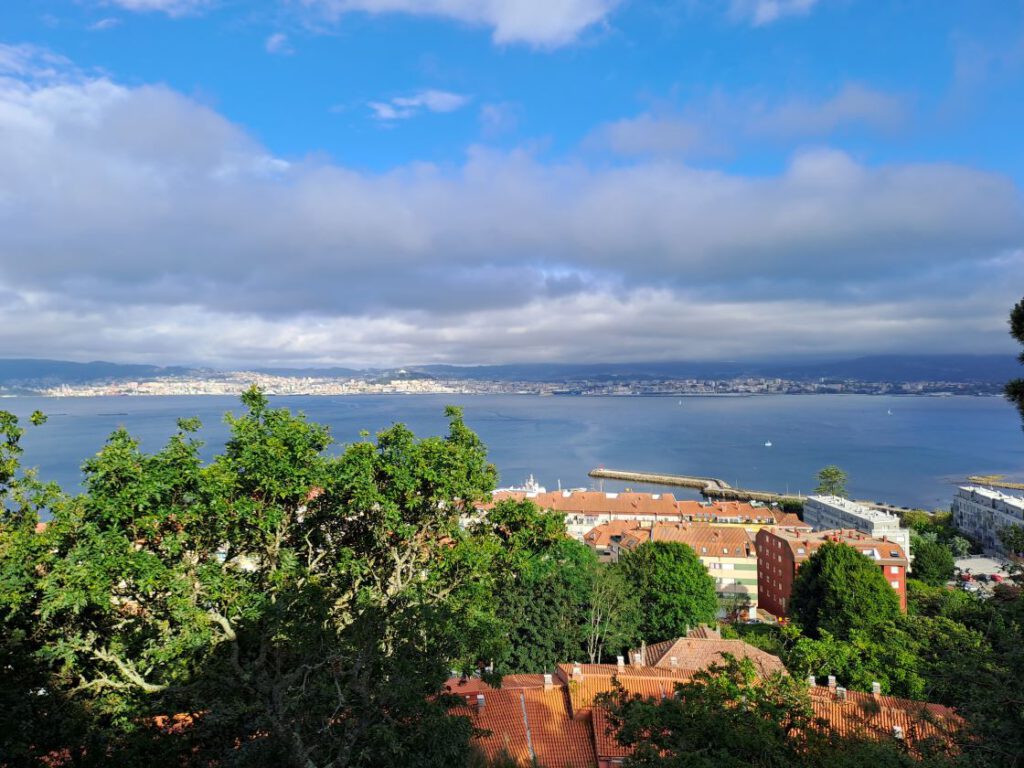
with a good view over the Ria de Vigo.
Spain is very clean, not only here in Cangas, but actually almost everywhere. If I compare it with Germany, no matter whether it’s a big city or a small town, there’s really nothing lying around on the streets. I wonder if this is also due to the large number of rubbish bins.
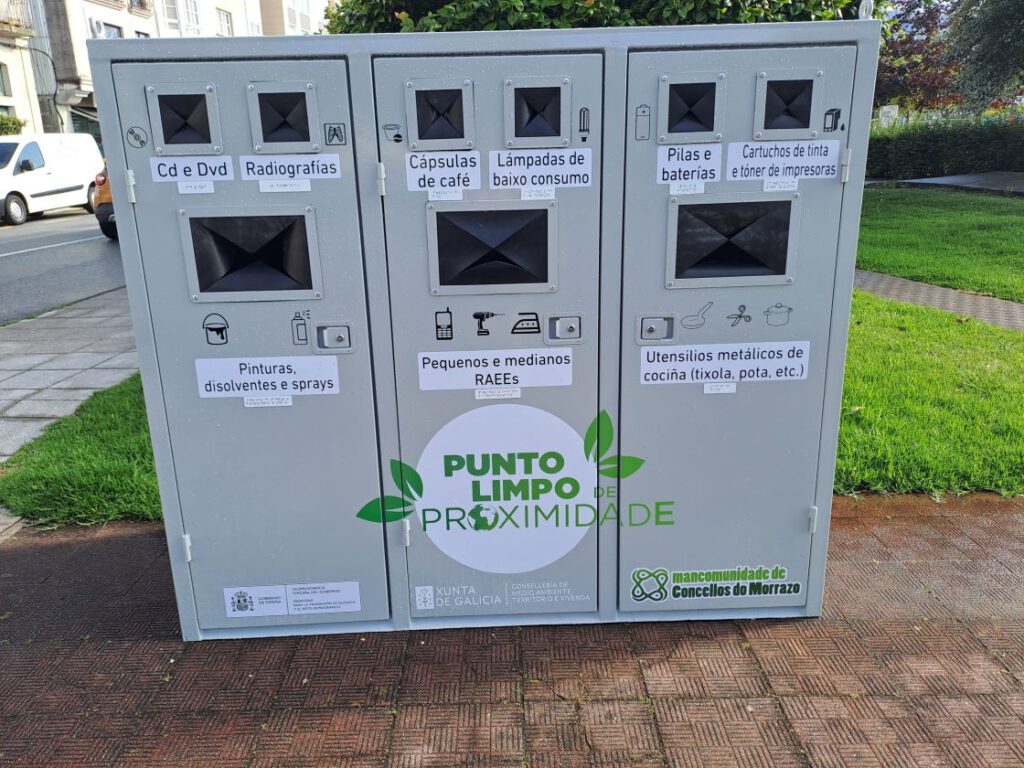
In addition, they do waste separation perfectly.
Only the ferry traffic made the harbour very restless. We set off after 4 days towards the Ria de Pontevegra, to Sanxenxo.
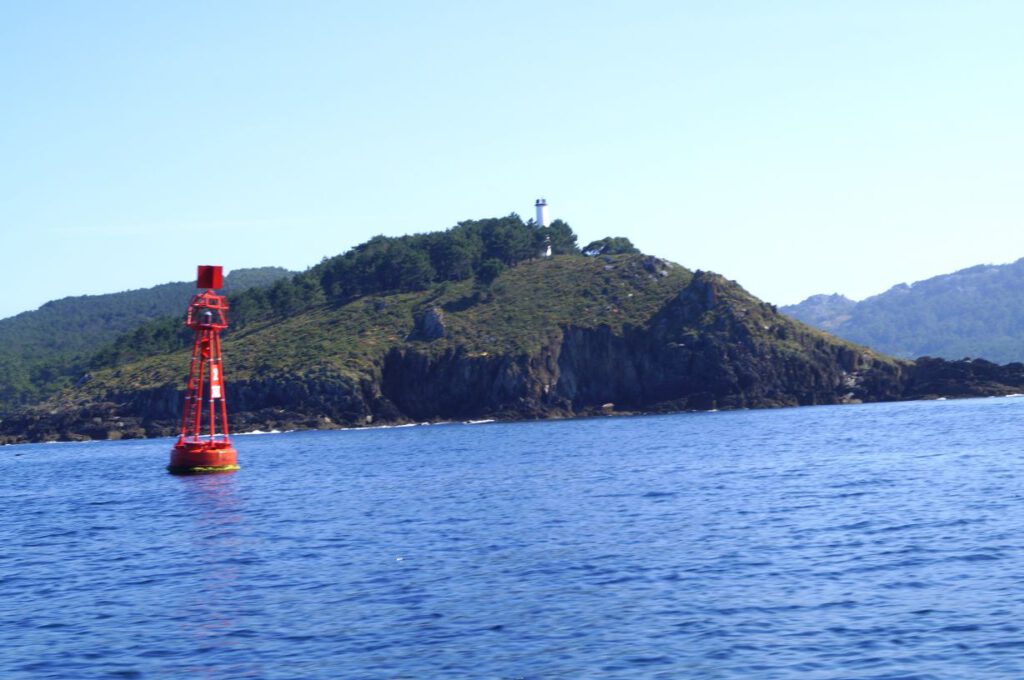
Punta Robaleira
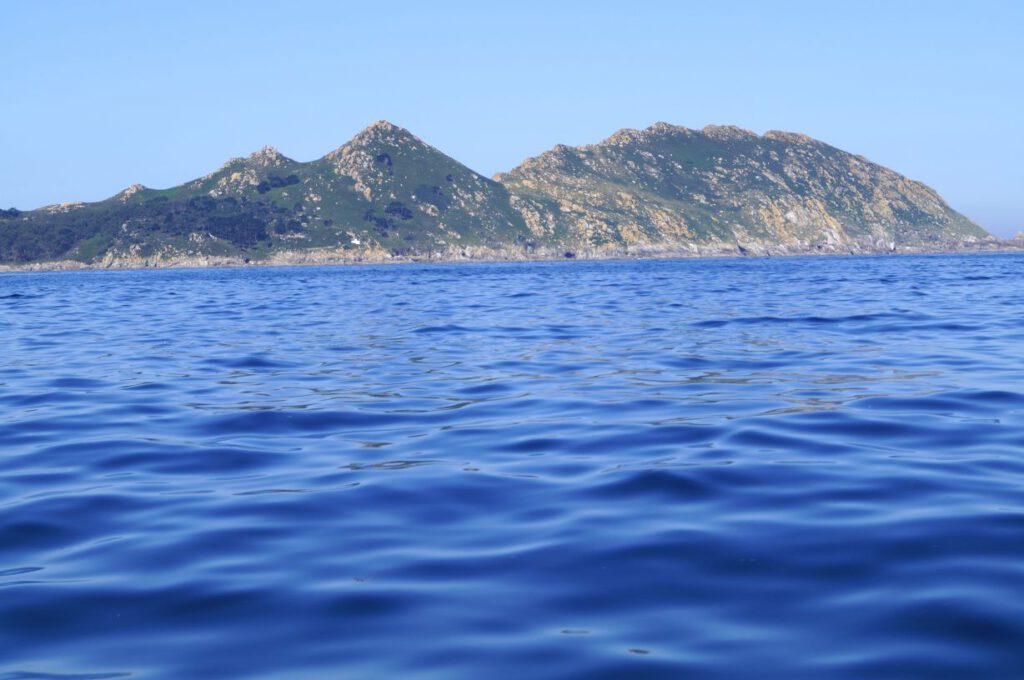
The island of Cies
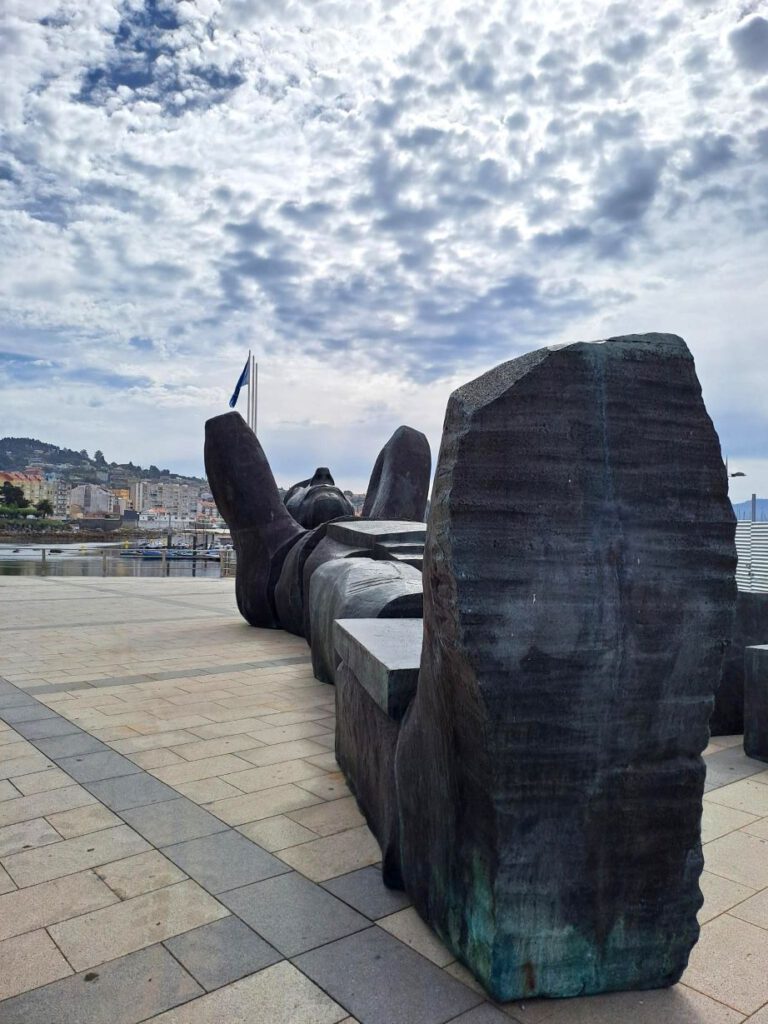
The giant of Sanxenxo
Baiona
Thursday, 29 June
As of today I’m single-handed again, Barbara left early and is already in Hamburg. On our holiday trip through the Rias after Moaña and Cangas we visited Sanxenxo, Portonovo and Baiona, the last two we liked best. Due to the high temperatures, there were no longer shore excursions. When the sun comes on top of the temperatures of over 25 degrees, it becomes extremely hot. Here in Spain, the sun has a lot of (heating) power, the UV factor of up to 10 makes that clear. We’ve just had midsummer, everybody goes into hiding from 11 a.m. onwards and doesn’t come out again until 5 p.m., even to go swimming on the beach. On the other hand, the nights are a bit livelier. This is Spain, and there is a good reason for taking a siesta during the day.
There is not much to say about Sanxenxo, a larger town with good supply possibilities, the harbour somewhat exclusive with yachts of the category big, bigger and even bigger. Most of them from 15 m upwards to 30 m, occasionally also above that. However, there were definitely smaller boats in the regatta corner that suited amica. It was nice that the staff took us away from the big boats and made it possible to lie here between the U10, the small boats under 10 m.
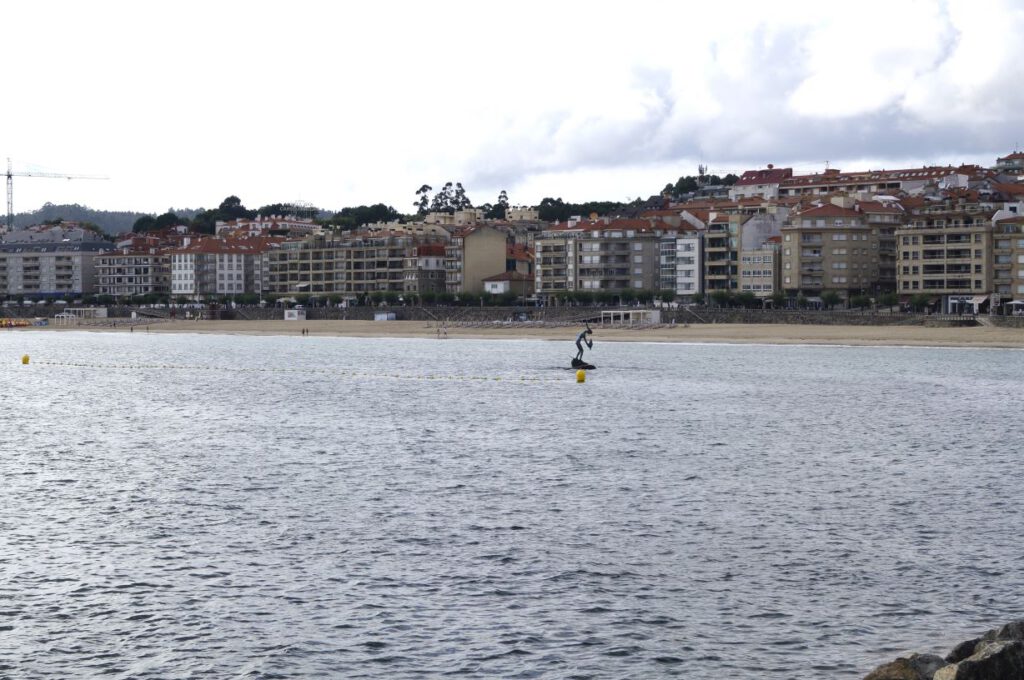
A big beach right on the promenade, if you like it.
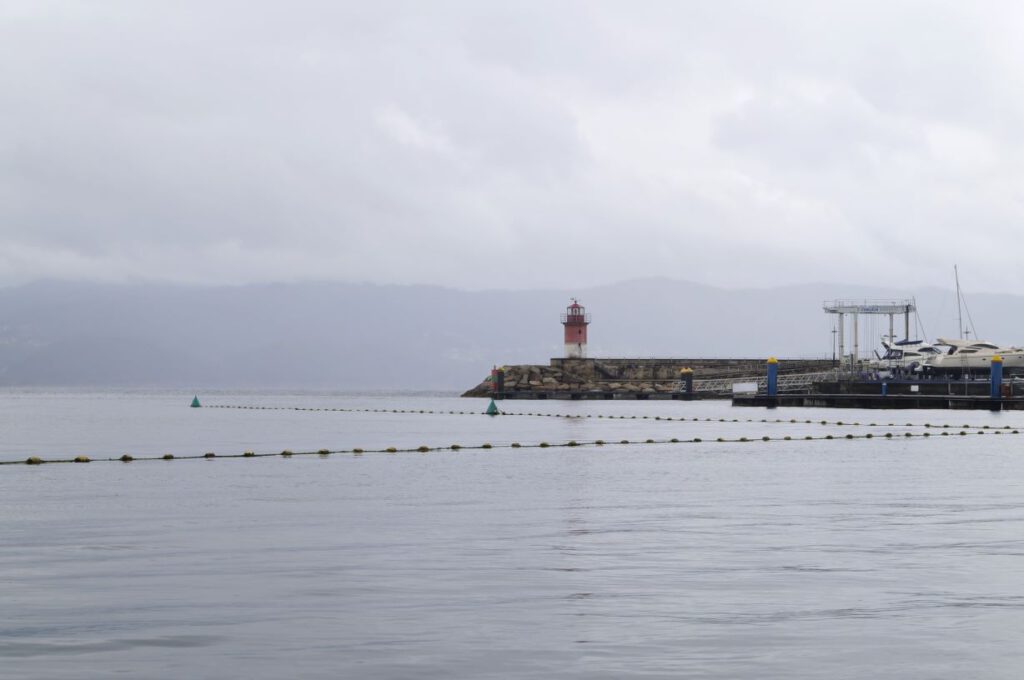
There was rain here too, and it bathed the Ria de Pontevedra in a special atmosphere.
Portonovo is only 2 nautical miles away and a manageable place. Despite the hot days, we explored the place in short walks. Many very small hotels indicated, that one can’t expect mass tourism here. The obligatory restaurant mile at the harbour was mainly visit by locals. Here people know each other.
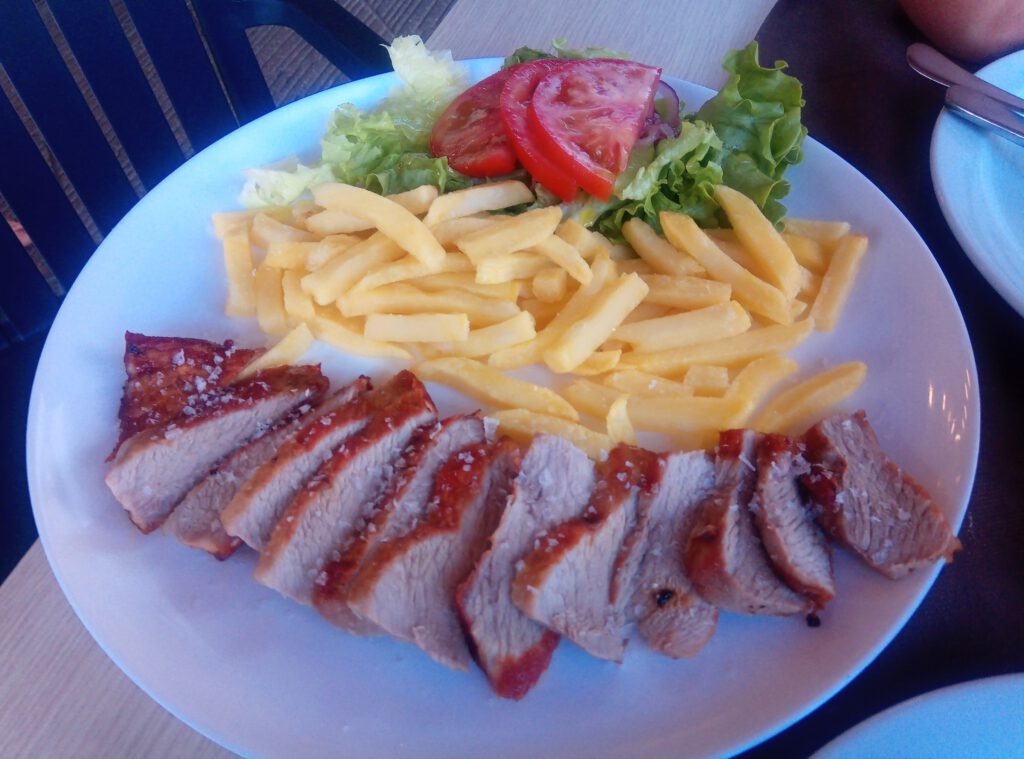
The food was super tasty and the fish always freshly caught, but unfortunately not in the picture. The land behind is certainly also very beautiful, but we didn’t take too many steps because of the temperatures, especially during the day.
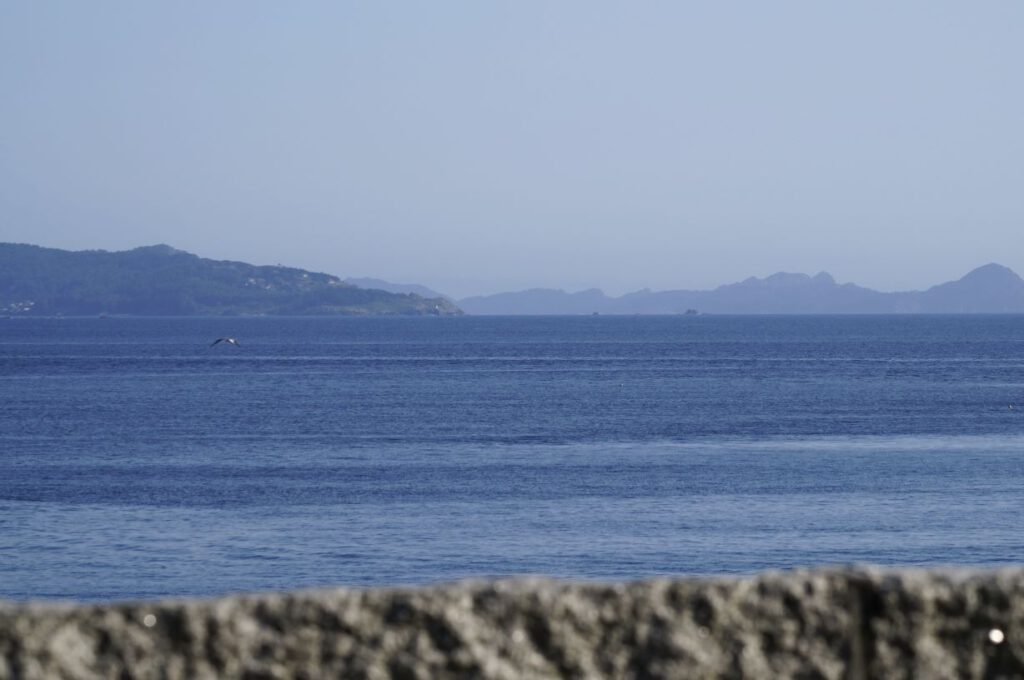
The view into the Ria de Pontevedra
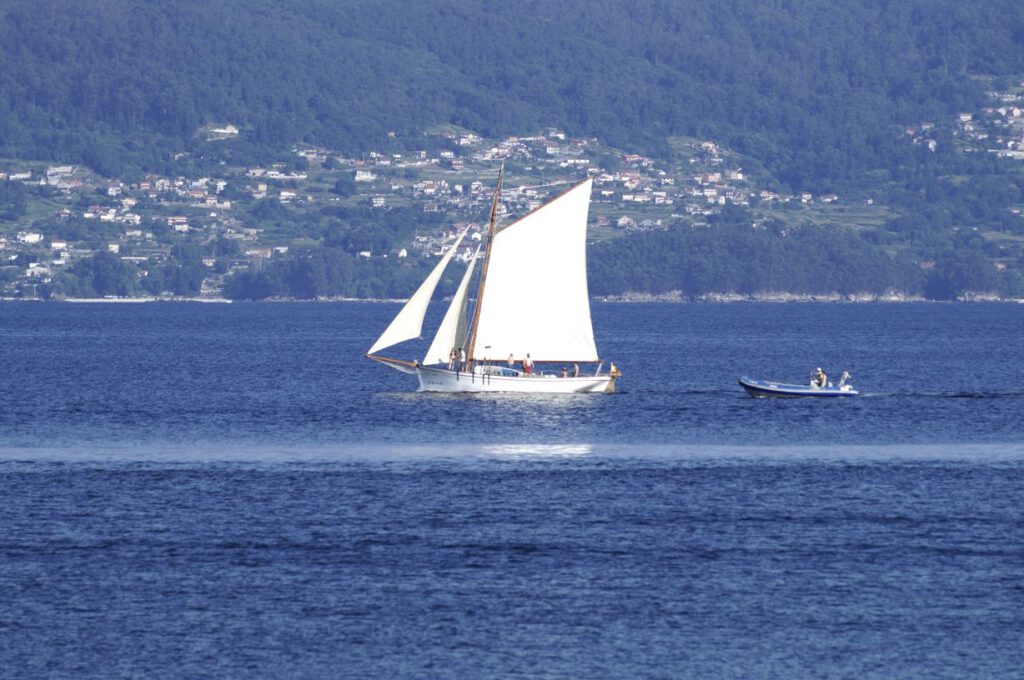
A beautiful sailor
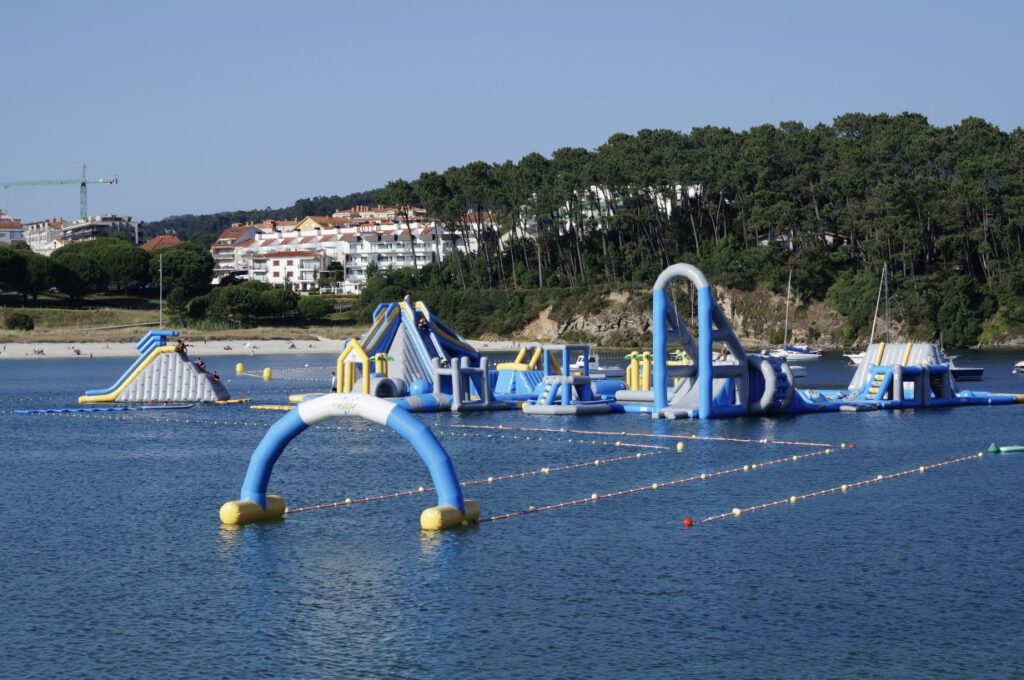
Here also children are perfectly catered for. Free entry!
We saved Baiona for last, we didn’t want to return to Vigo. It’s relatively easy to get to the airport from here, and it’s my port of departure to Portugal. We don’t need to visit Vigo again. Everywhere in the Rias is nicer, especially Baiona.
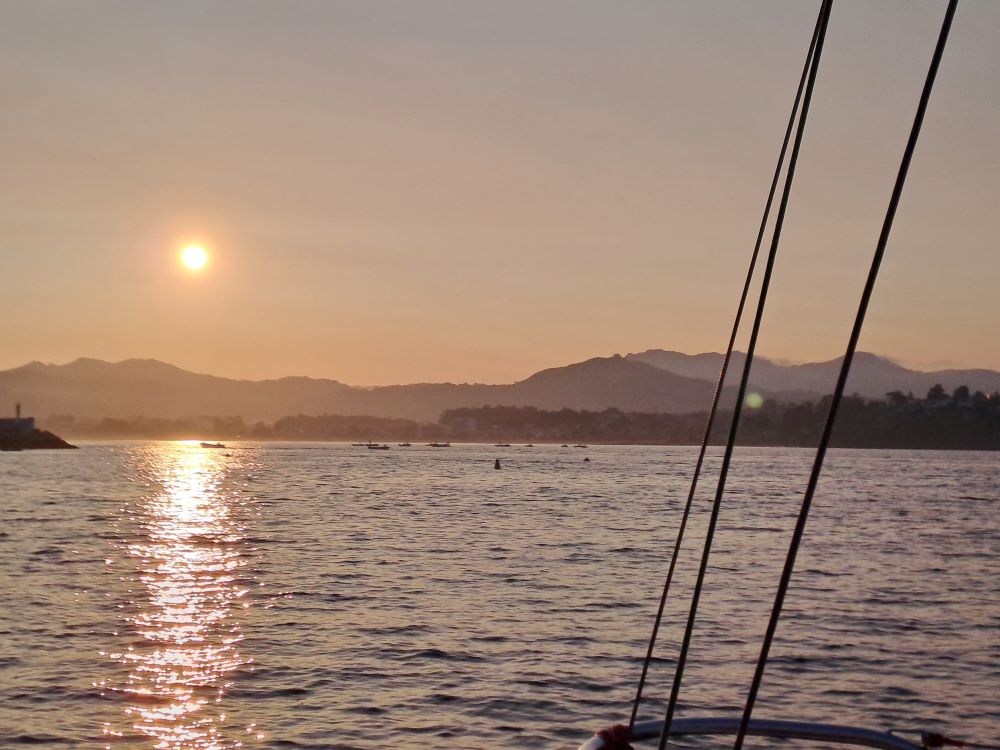
View over the bay of Baiona in the morning
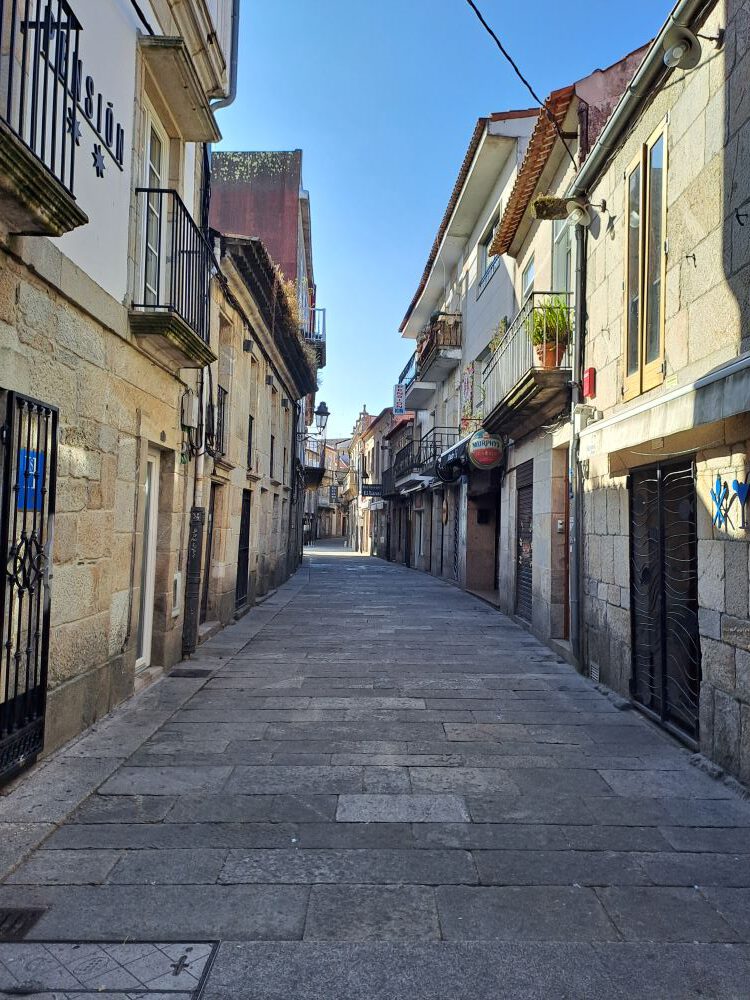
Baiona old town redeveloped
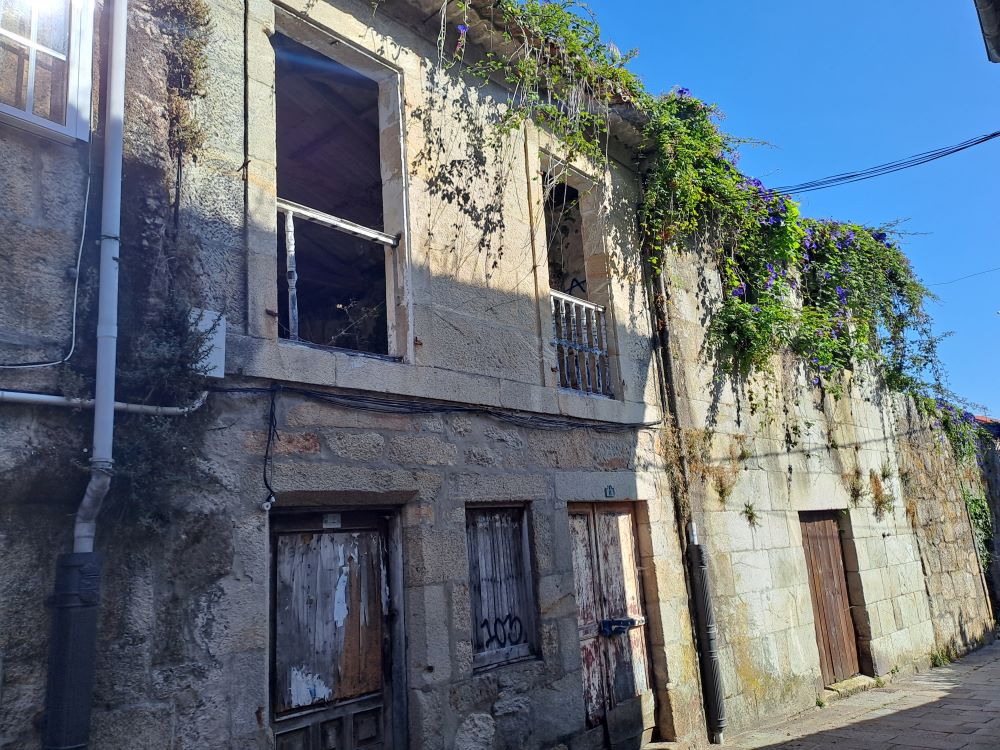
and still in progress
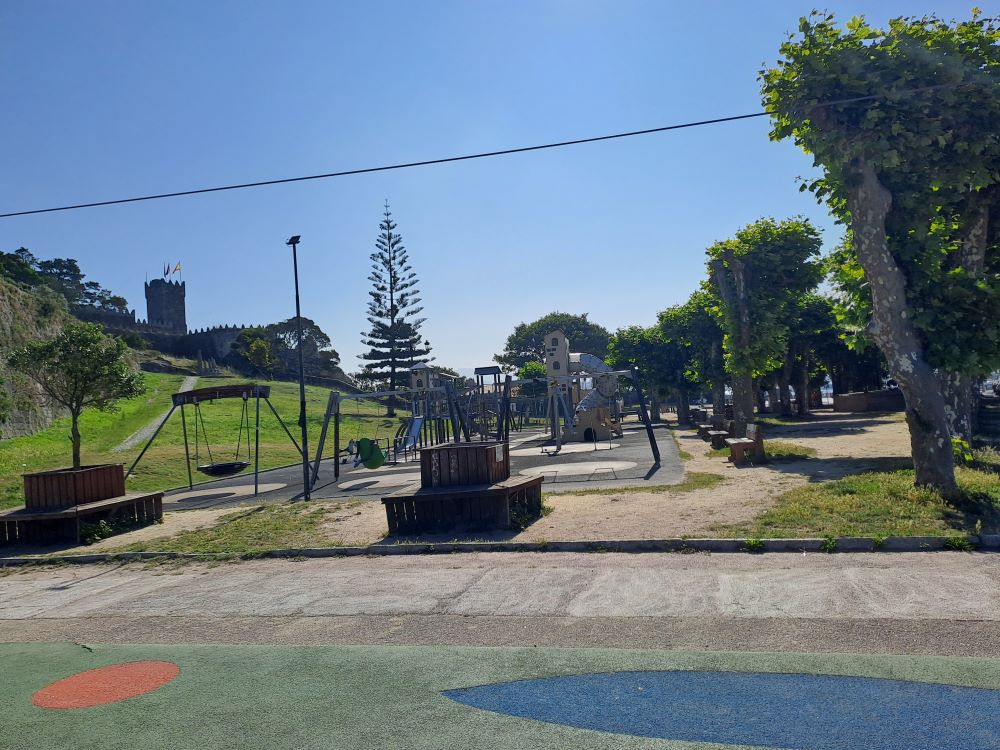
Children have a higher status here than in Germany, That is not a question of money
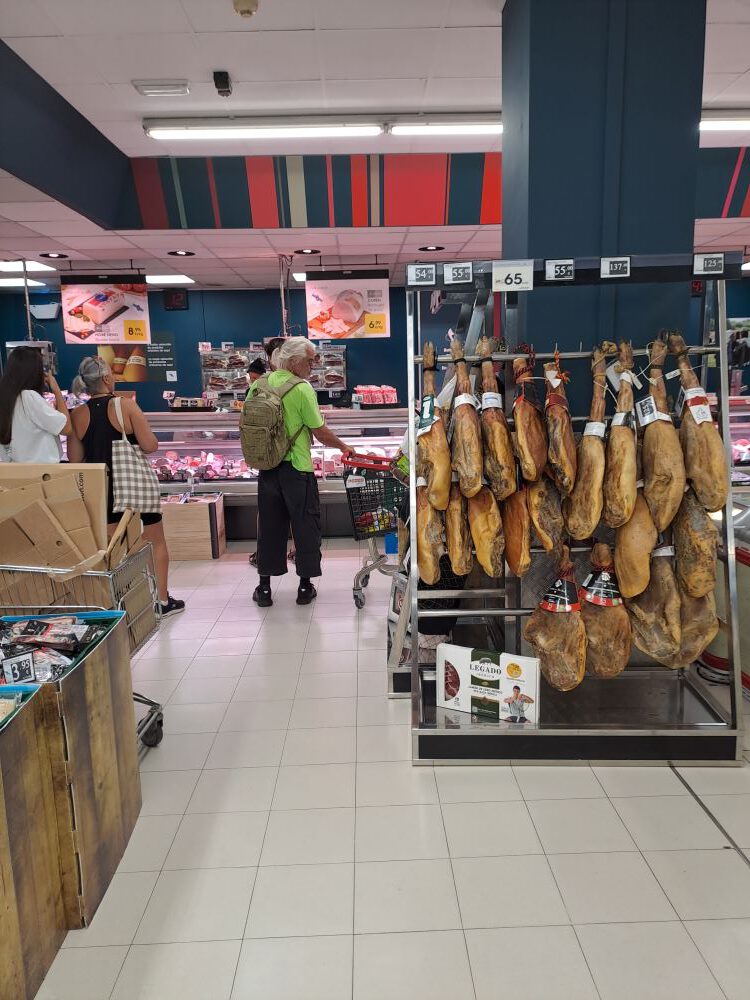
You can’t get past the ham
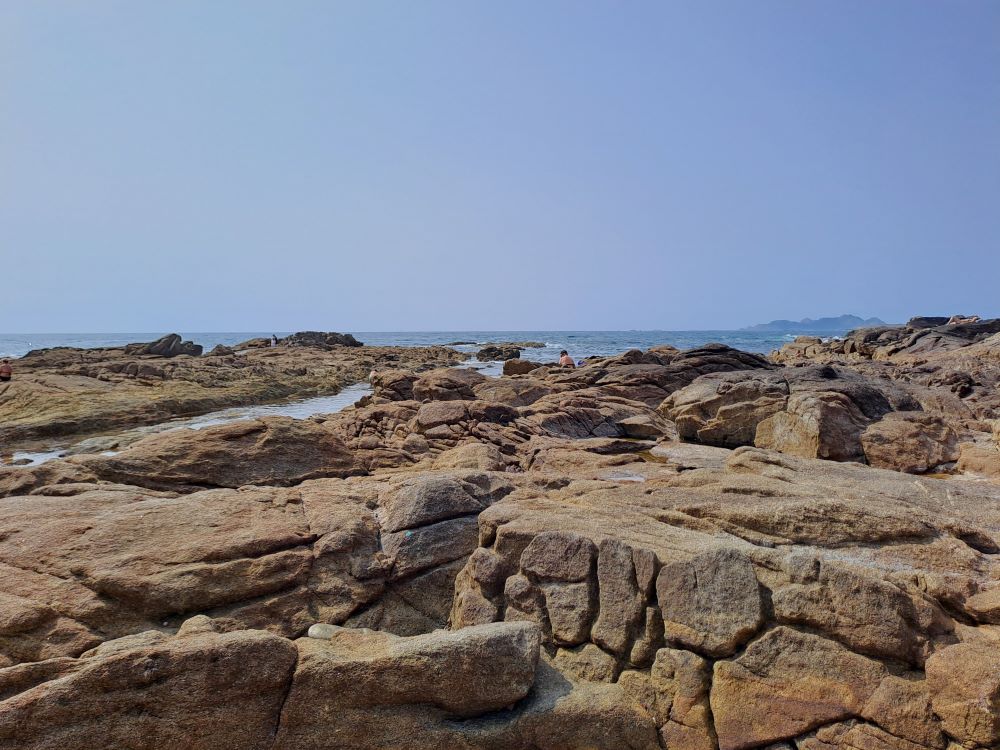
The charm of the rocky coast
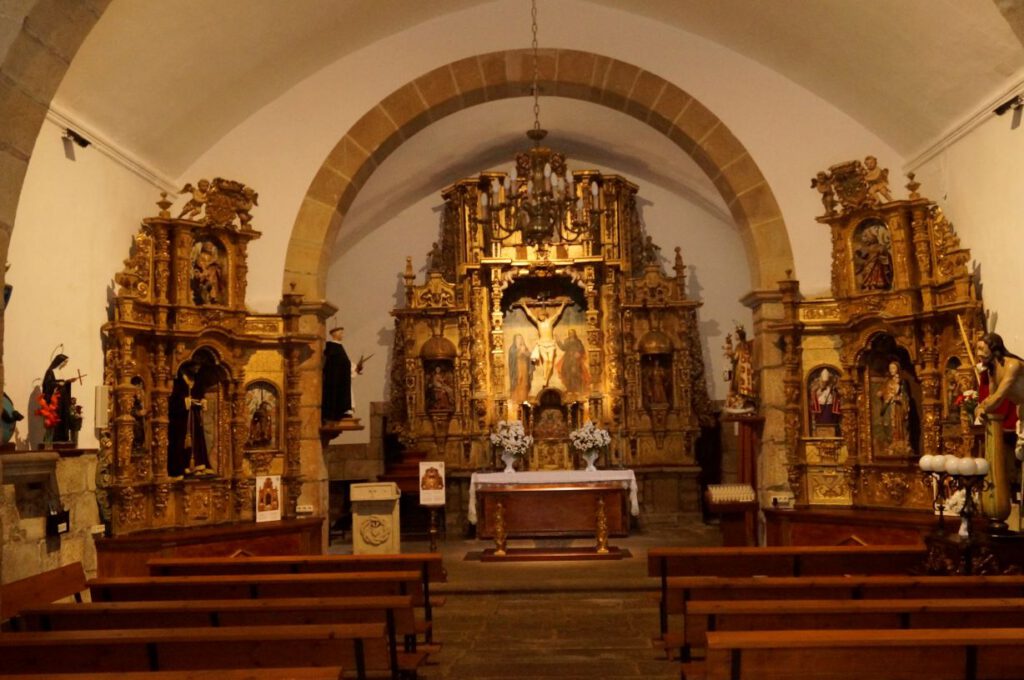
Church, always impressive
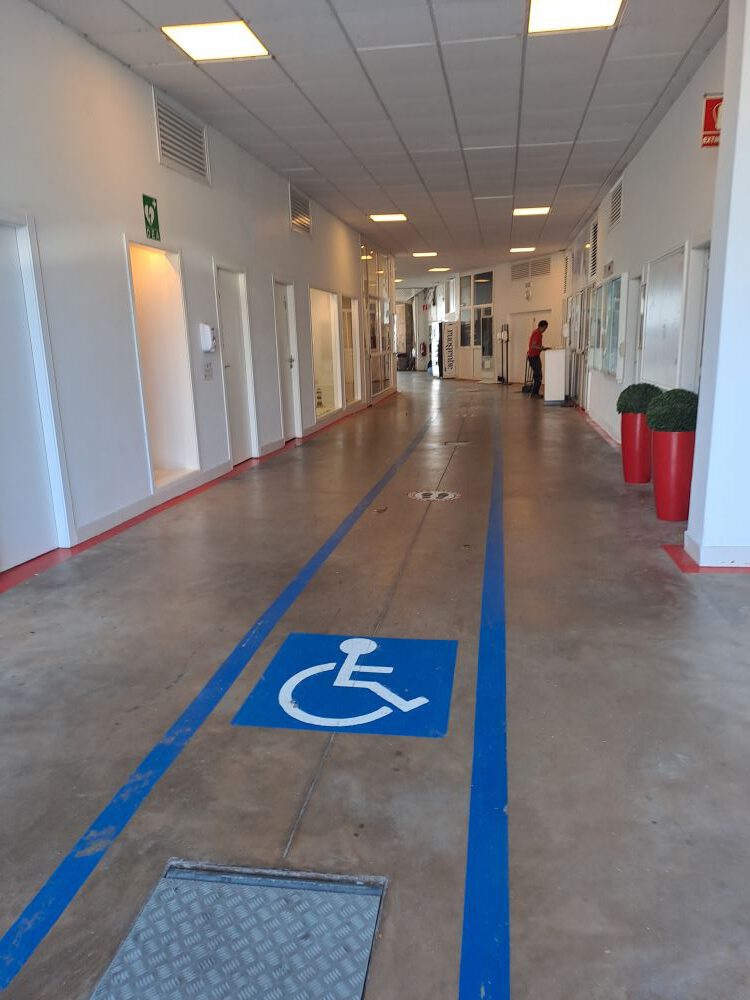
Service tunnel of the Monte Real Club Yates de Baiona
The beaches directly at the harbour are cleaned every day, really. In general, there are a lot of waste paper baskets here, too, everything is always cleaned and therefore it looks very clean. At the same time, there is hardly any tourism to discover here in the town, almost exclusively locals populate the restaurants and cafés, the beaches and footpaths, people know each other. Of course, encounters take place almost exclusively in the evenings and in the cafés in the mornings.
The Celtic customs, they celebrate around Midsummer, the witch parties, last all night and there’s banging, night and day. Witches here in Galicia are something like druids in Brittany, Ireland and Cornwall, beings that are worshipped.
Even the Catholic Church is tolerant on this issue. Just like the north coast of Spain, it is certainly worthwhile to spend some time here on land. With the coastal travel I do, you only get to see all these things in passing. That’s a real shame, Spain is quite diverse, after all.
I have to look after amica more intensively now, as I’m about to embark on a trip that will demand a lot from both, me and amica – the long Portuguese west coast. The high swells, although more even than on the north coast of Spain, sometimes make it difficult to approach harbours. Although the north wind, the nortada, as the Portuguese call it, is currently blowing a bit too hard with up to 30 knots. The swell is correspondingly high. At some point, the orcas will come, and I’m sure I’ll be hiding from them in the harbour. There are totally 11 trips towards the Algarve, which I want to reach by the end of September. Only one of them (from Sines to Lagos) is 80 nautical miles long, all the others are easy day trips. I have a good two months to do this. Portugal beckons.
